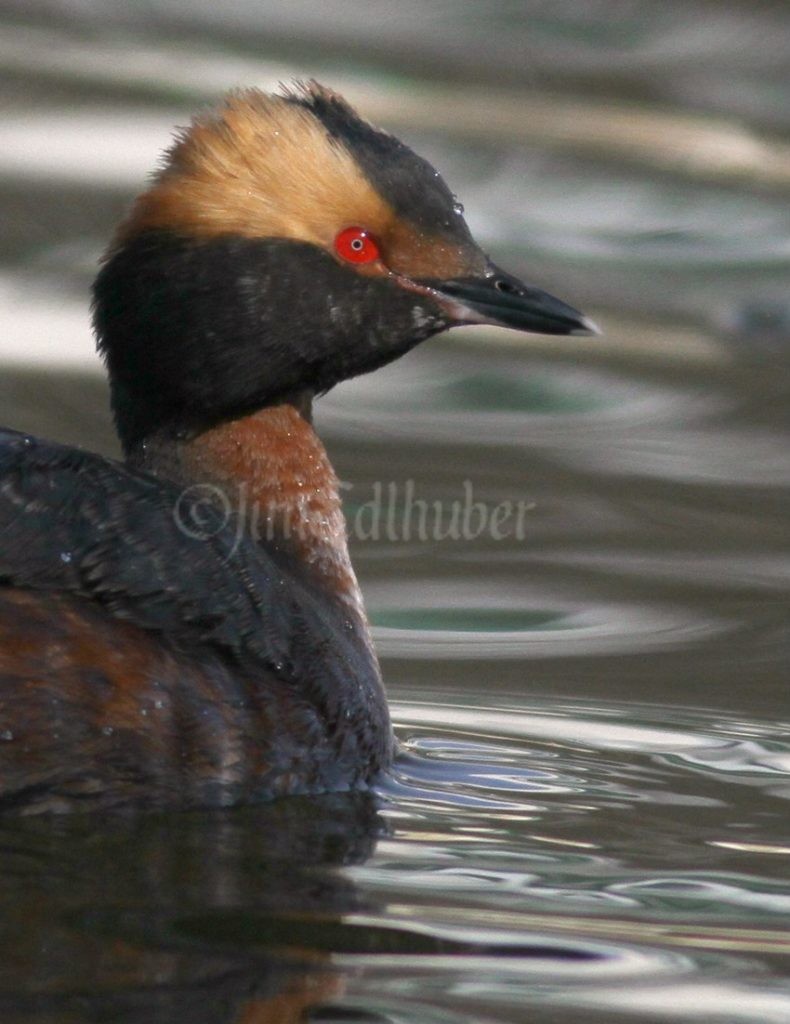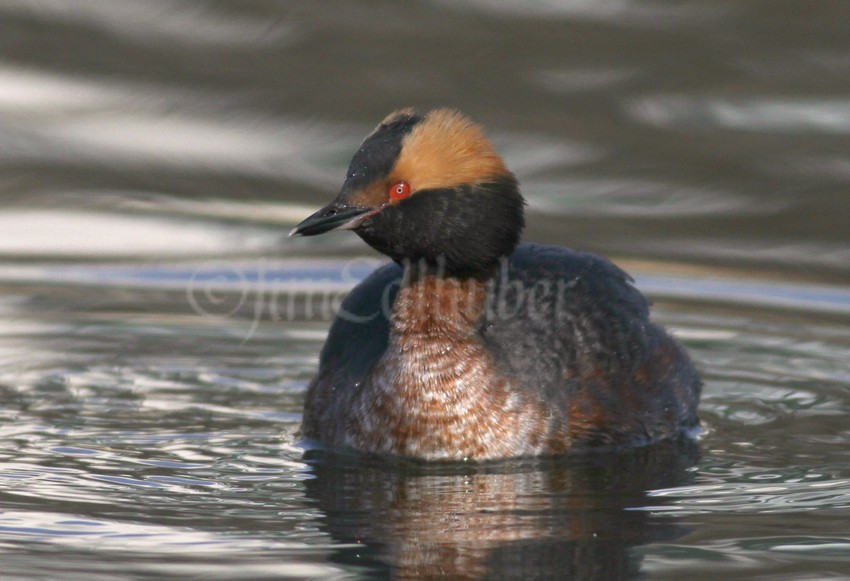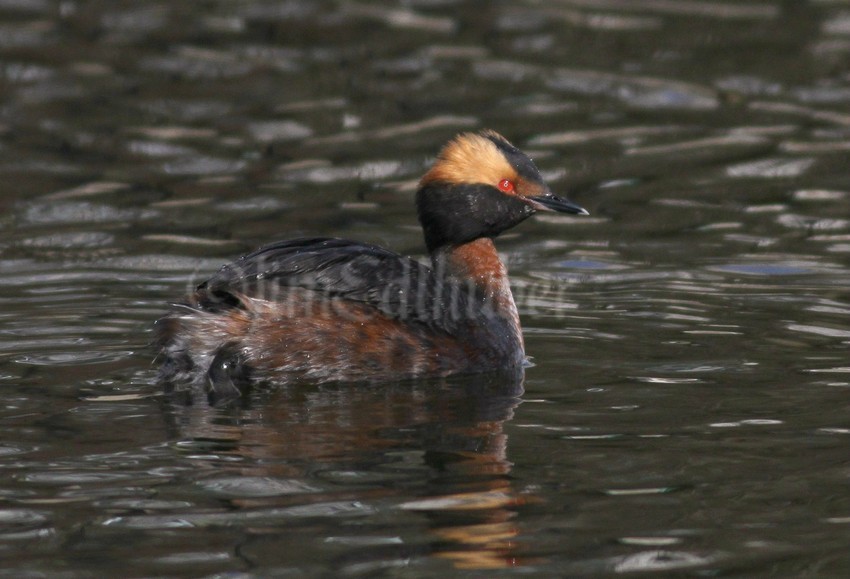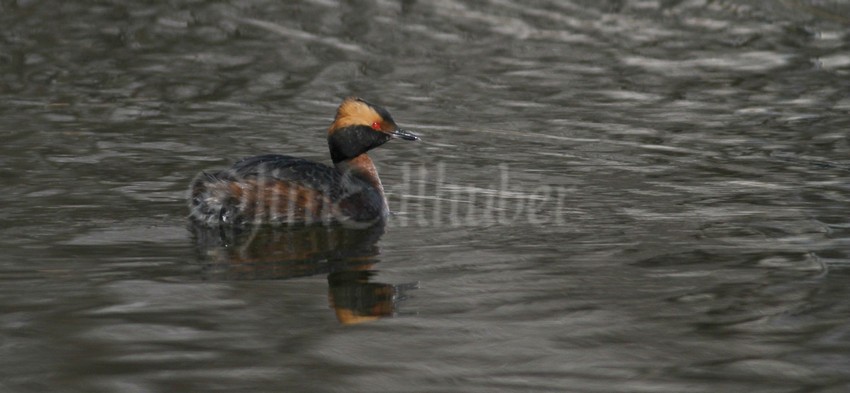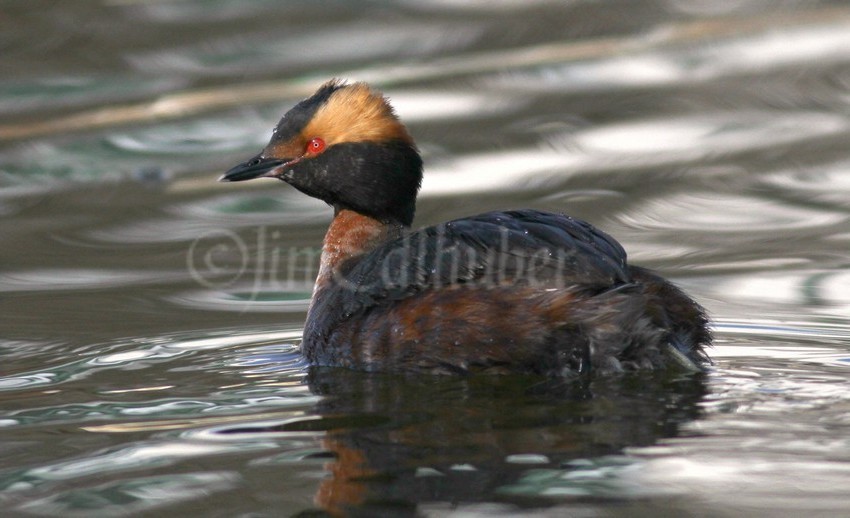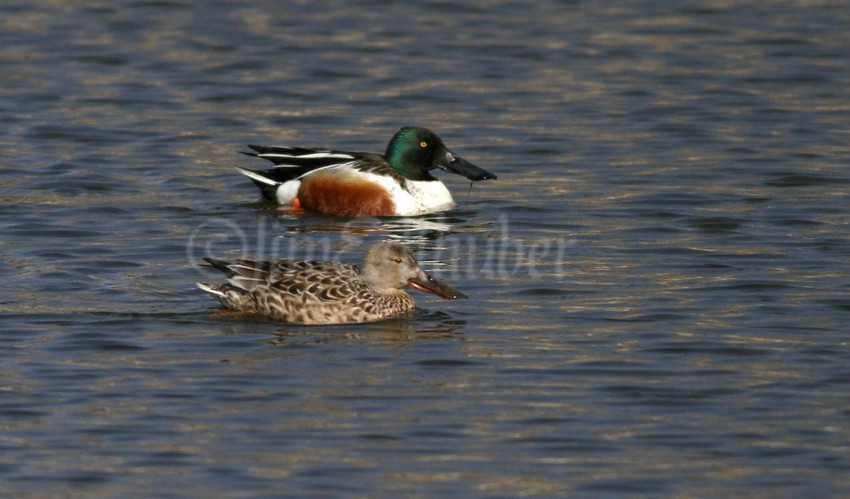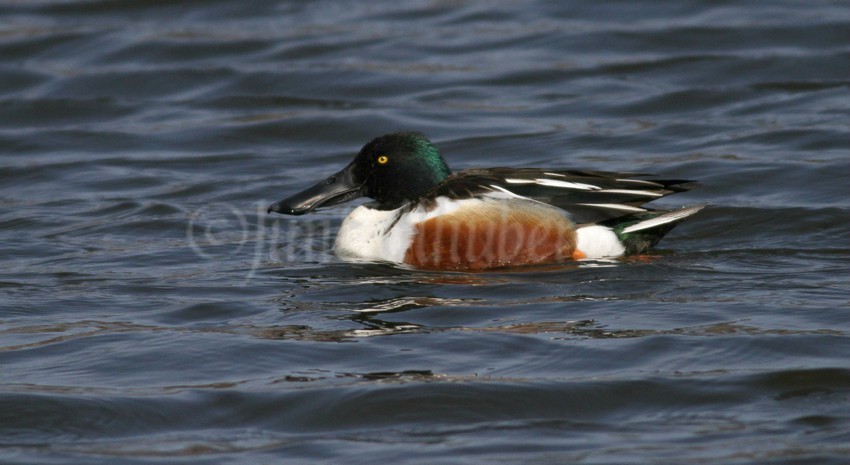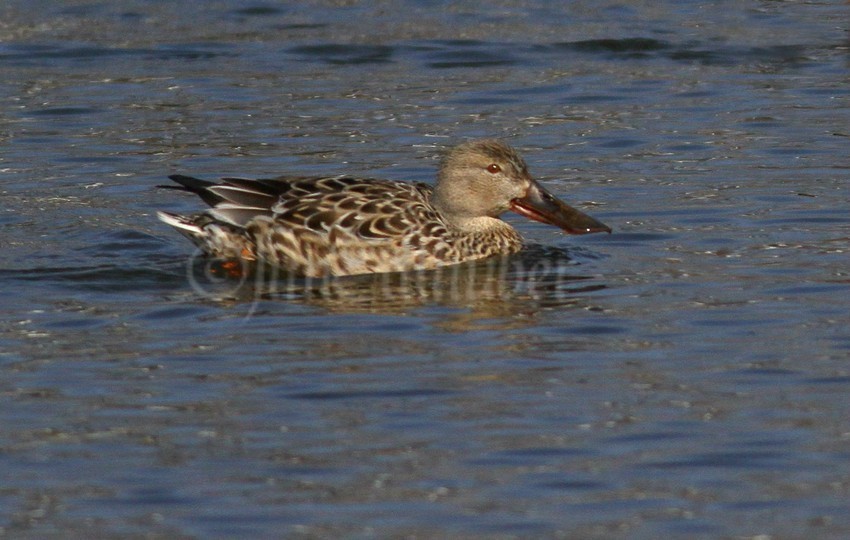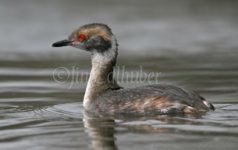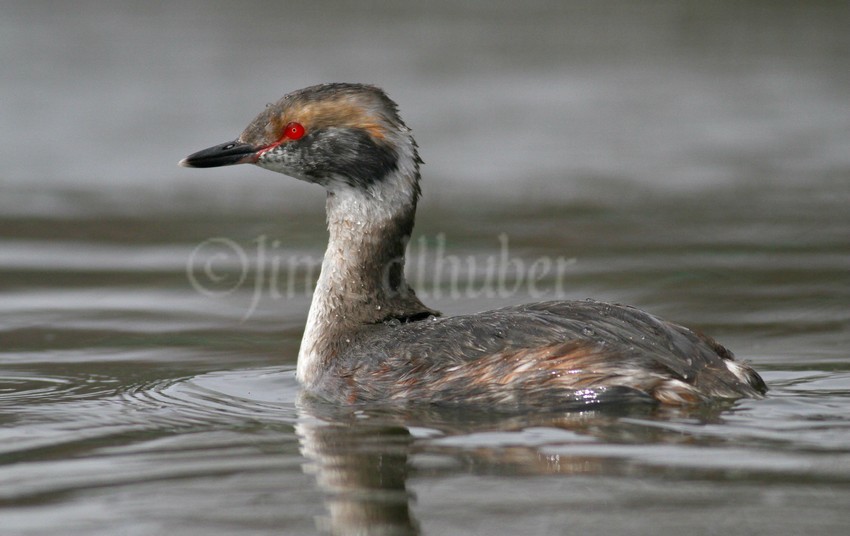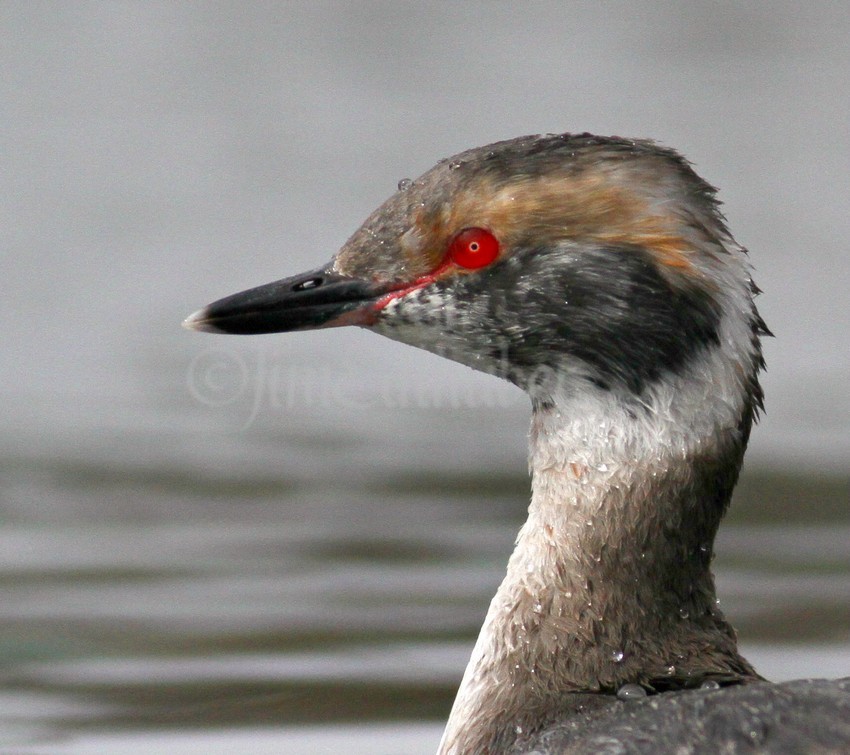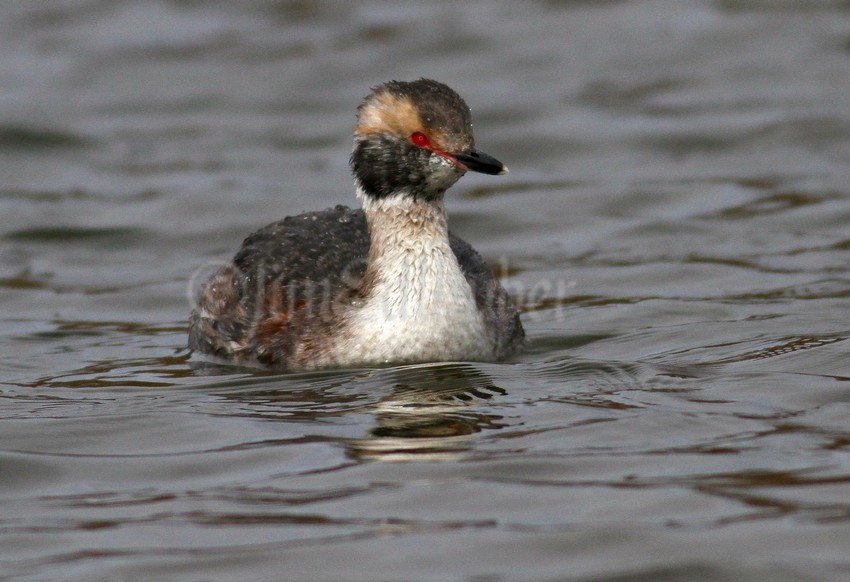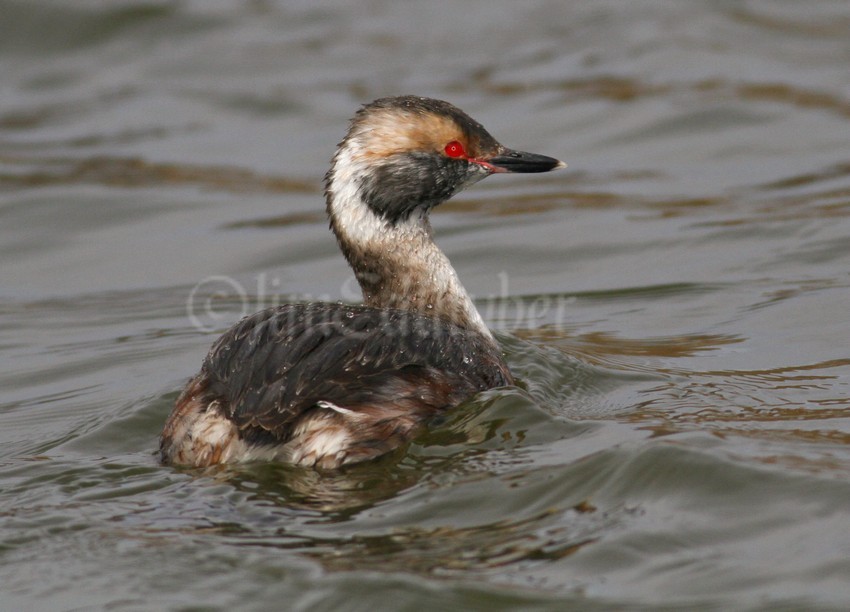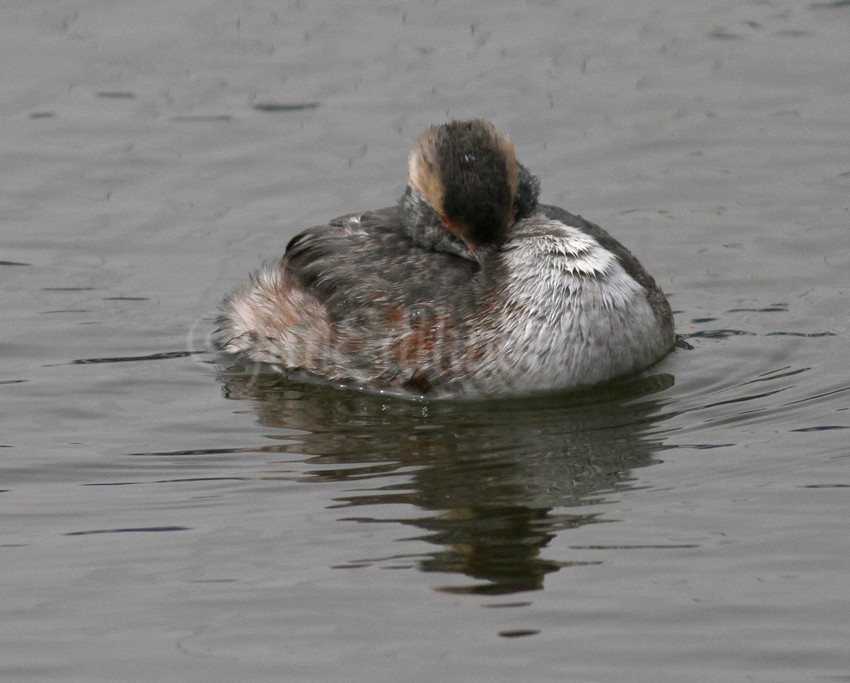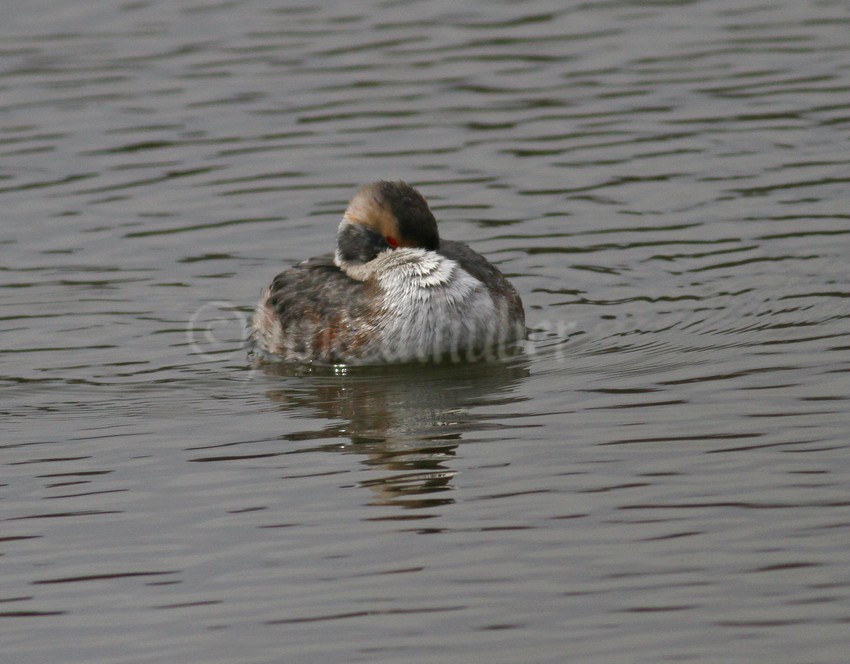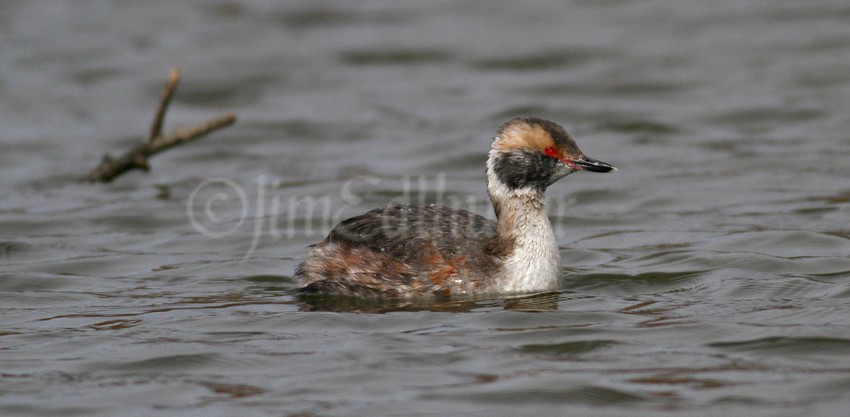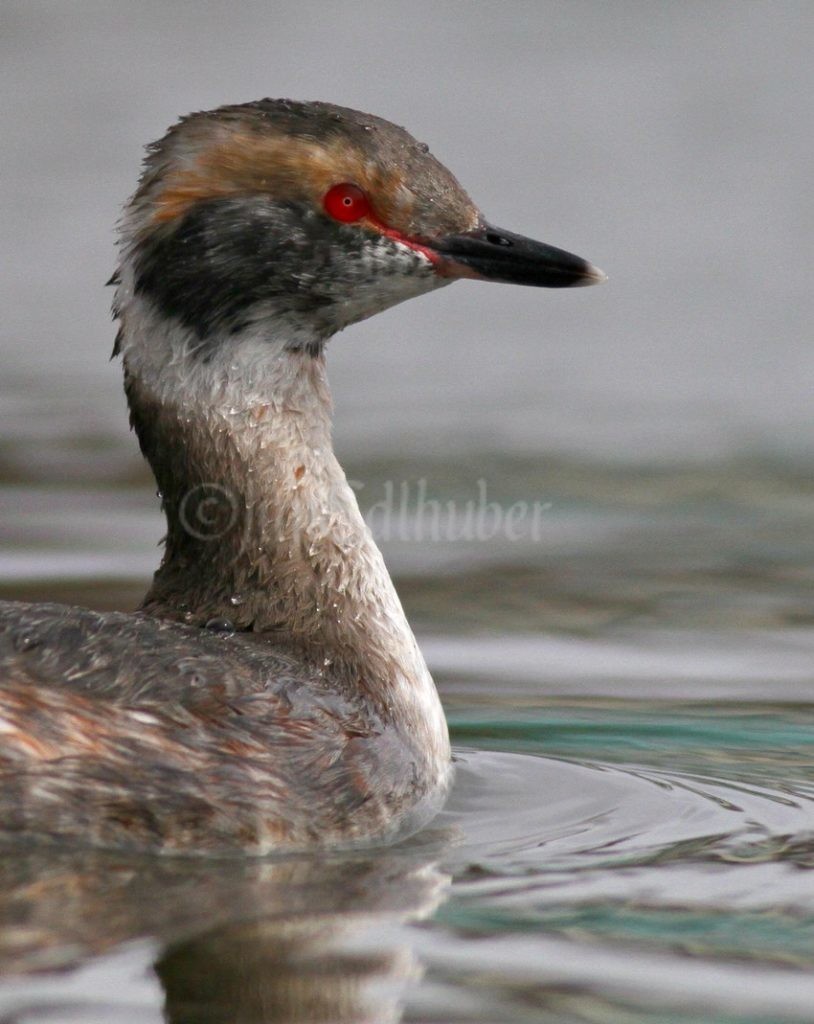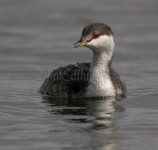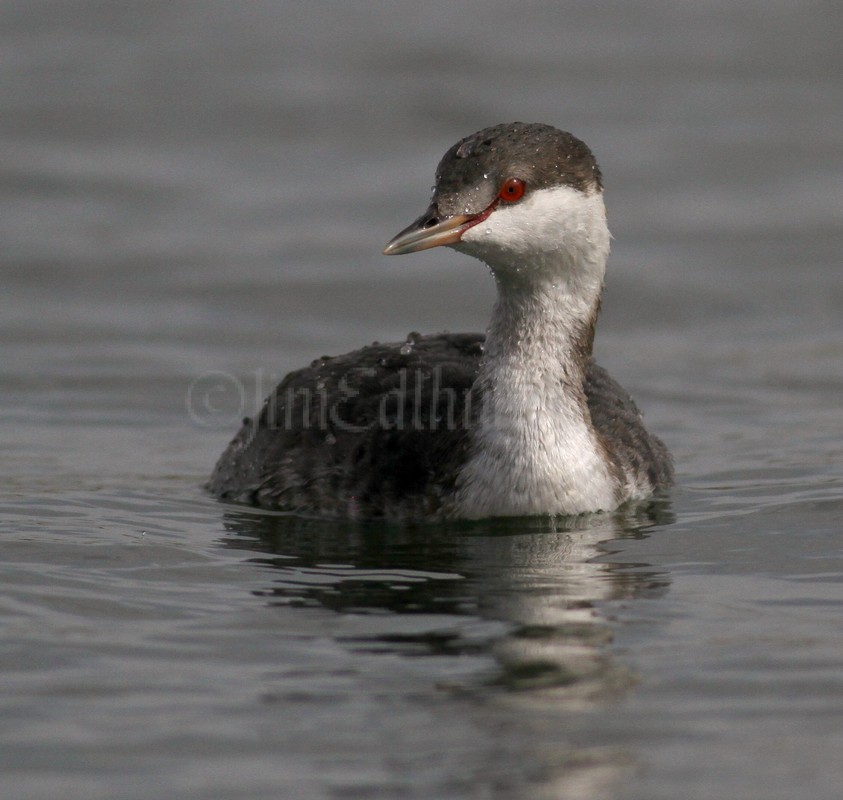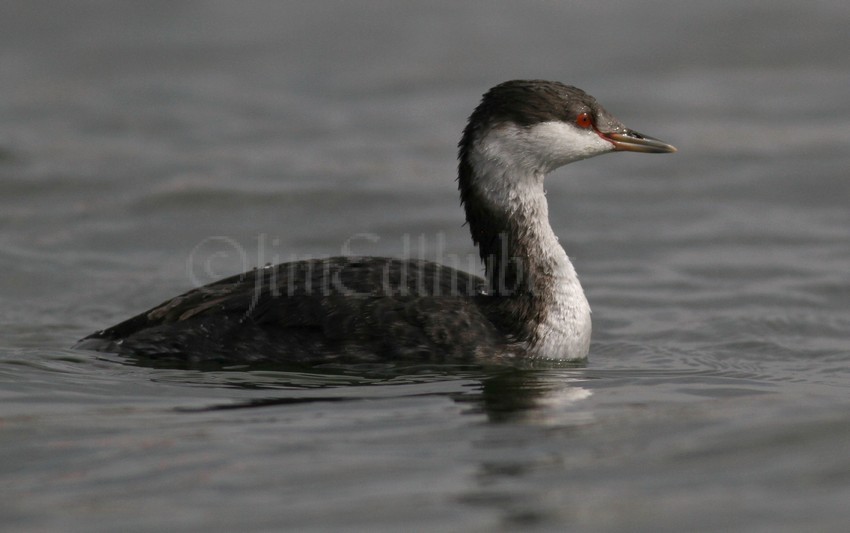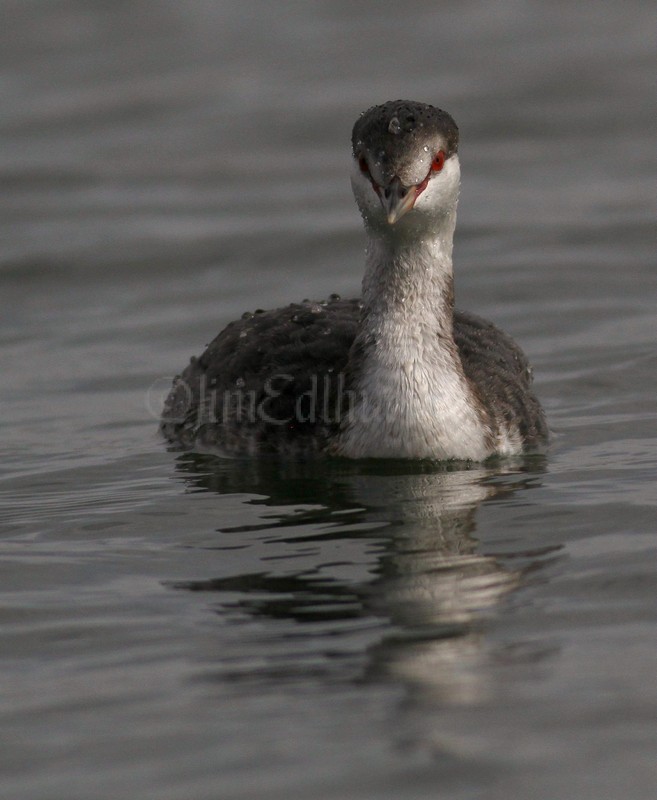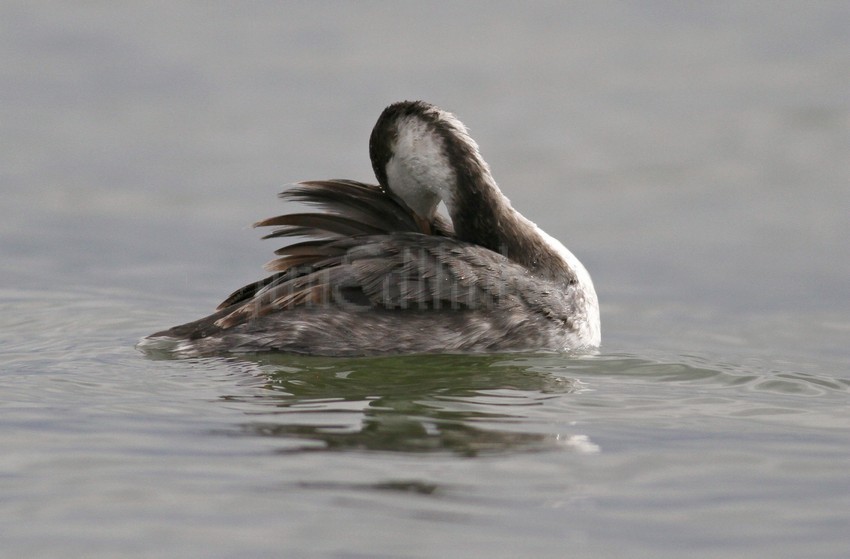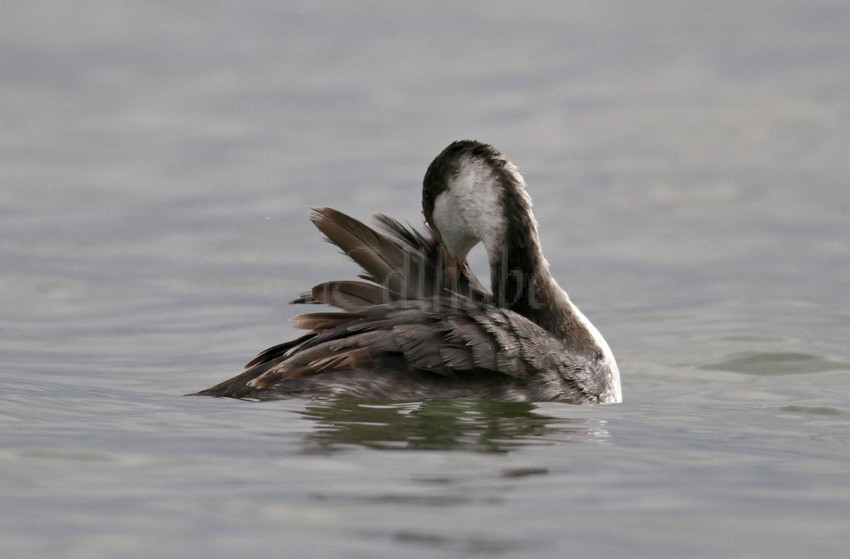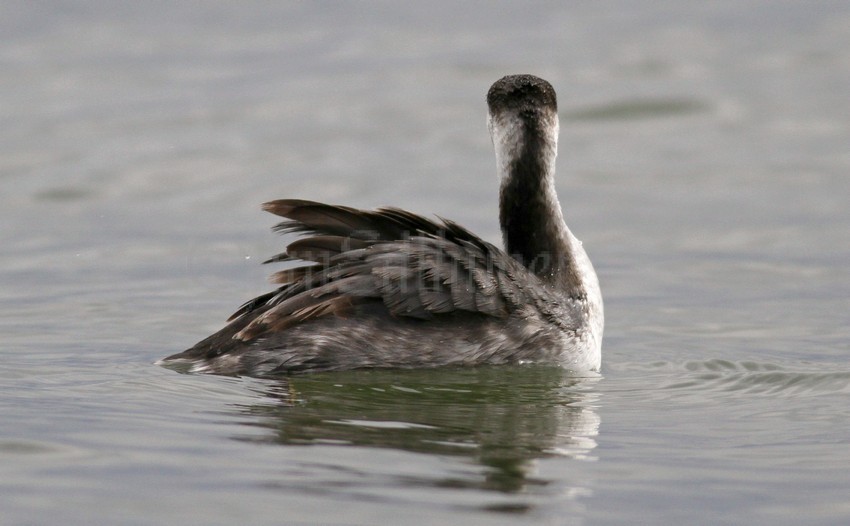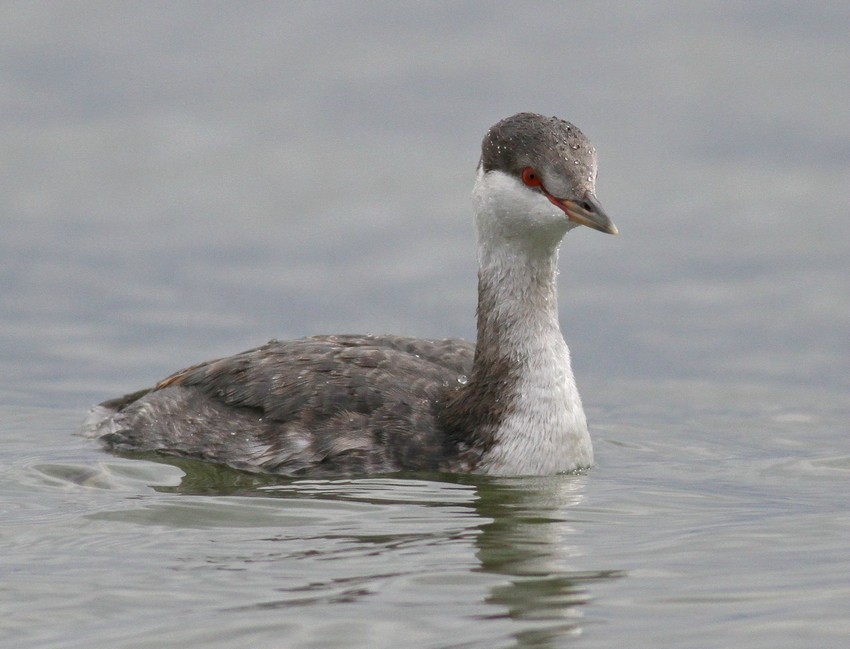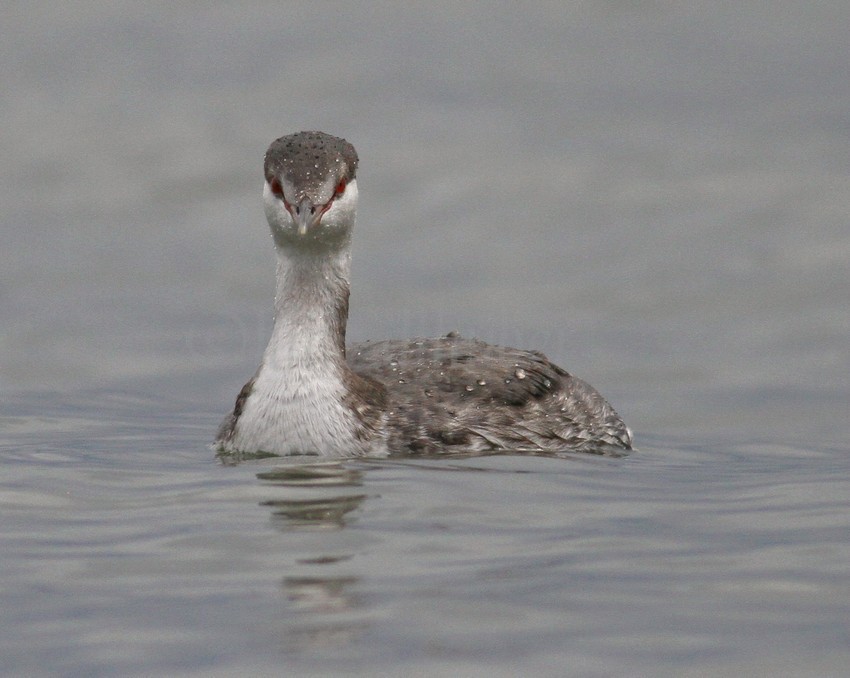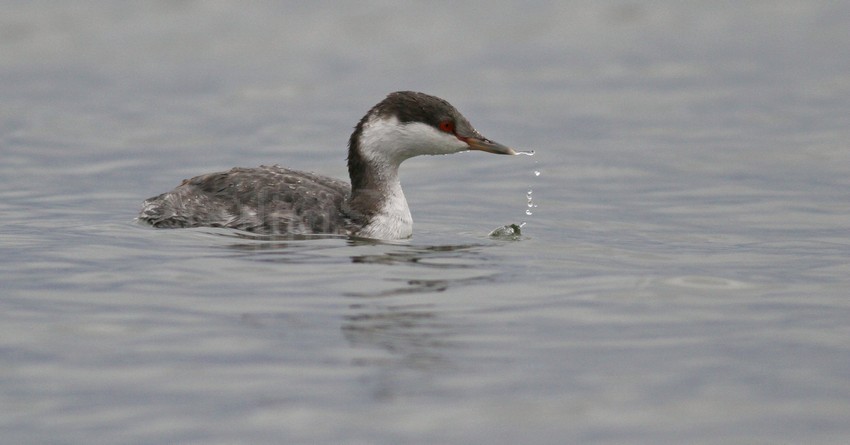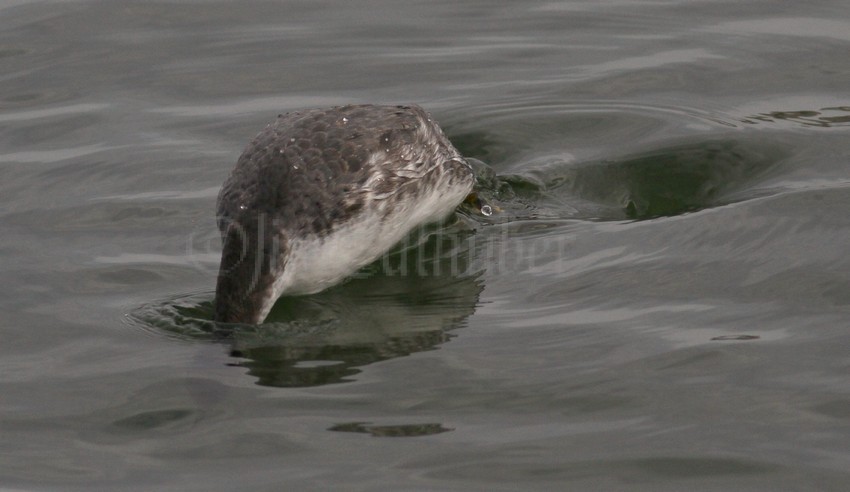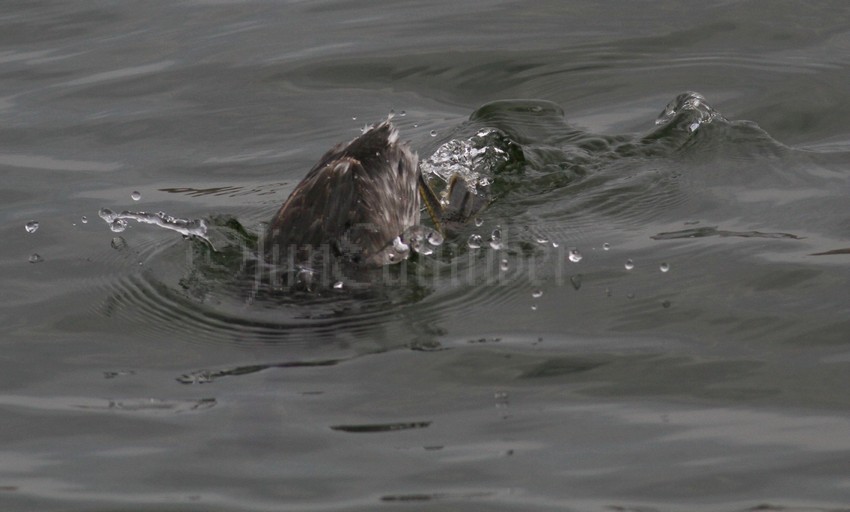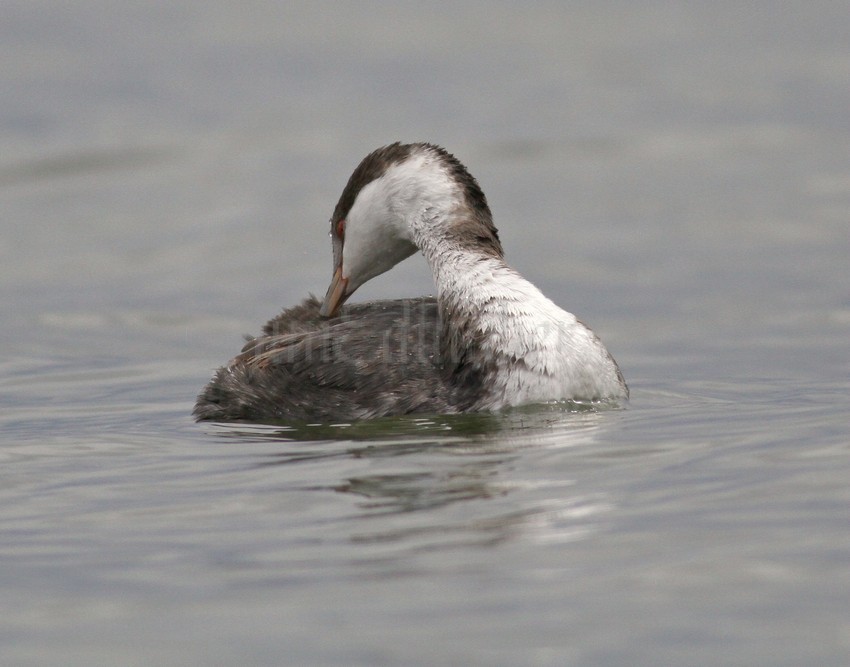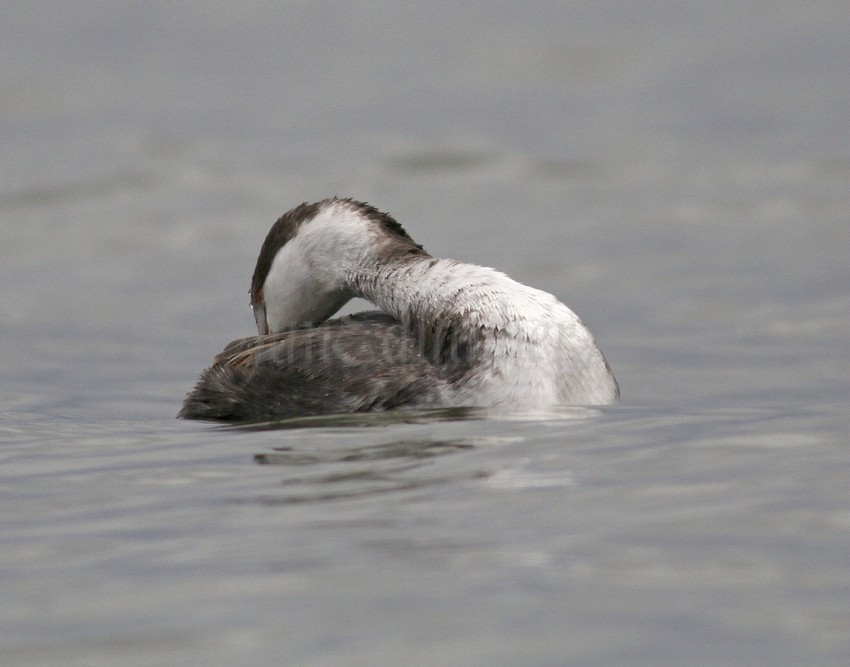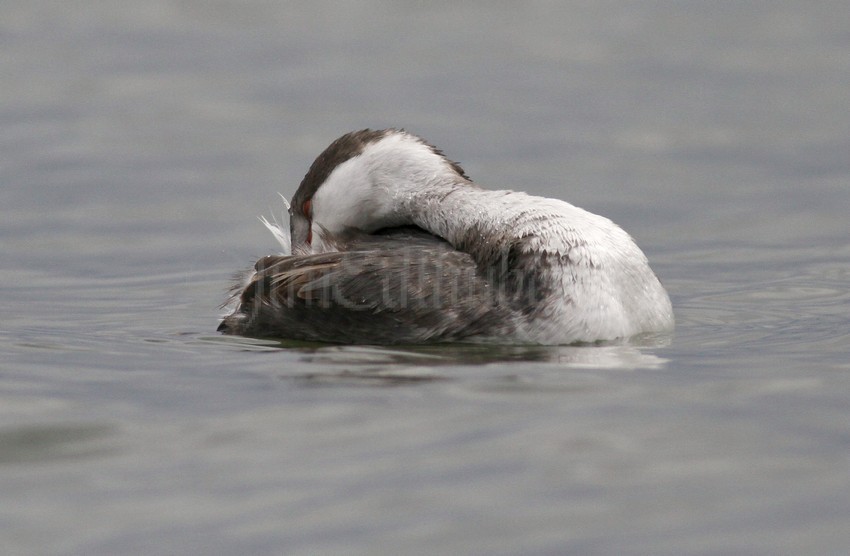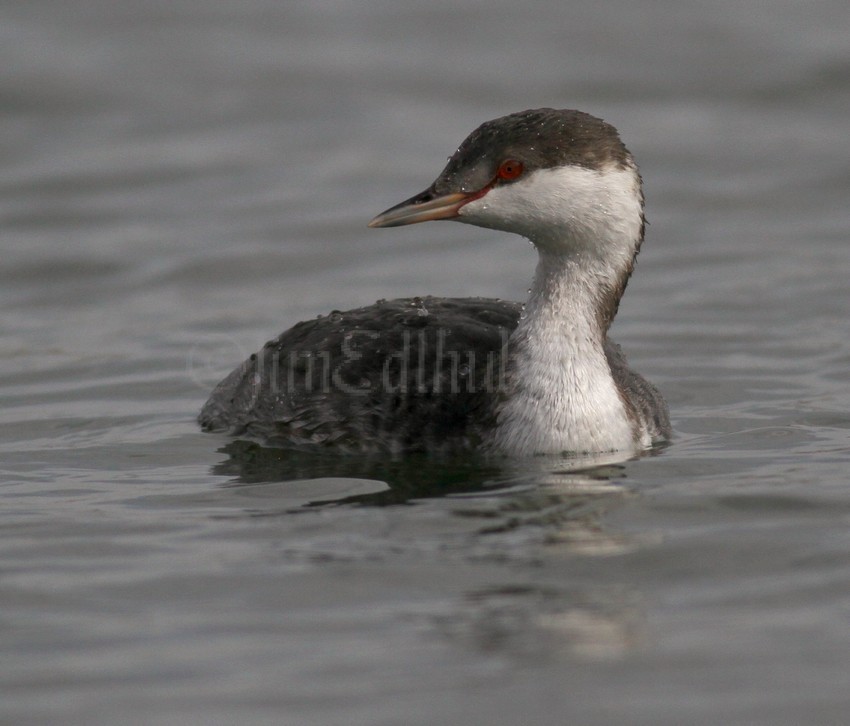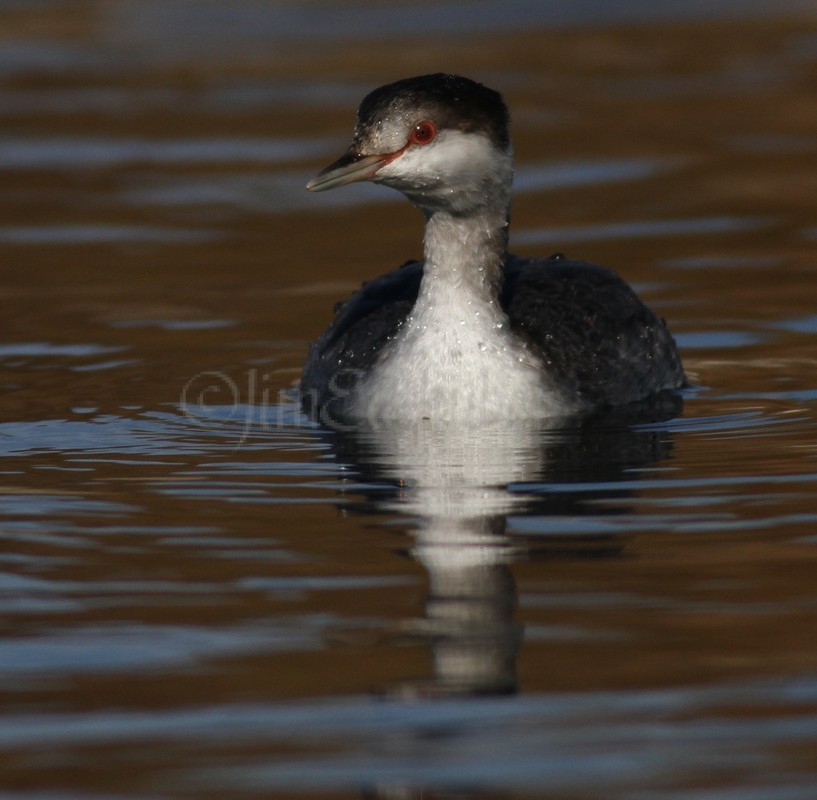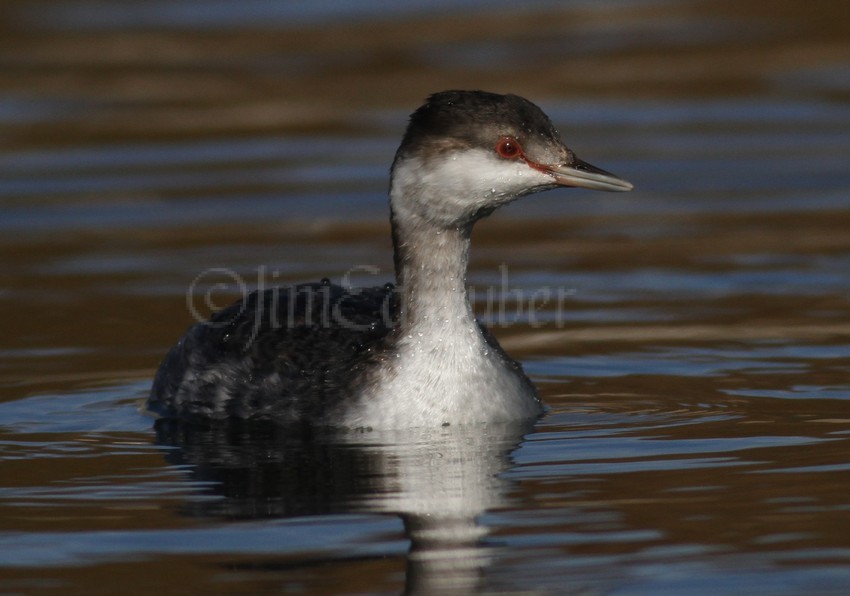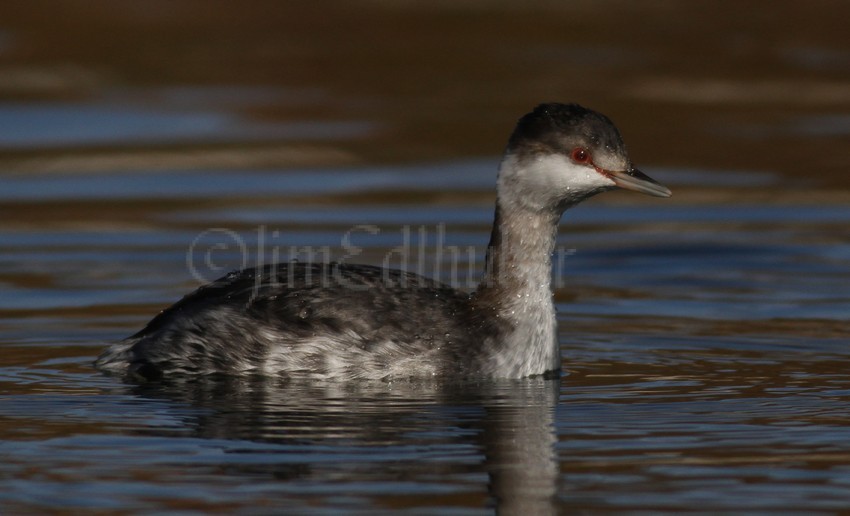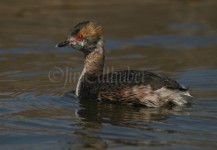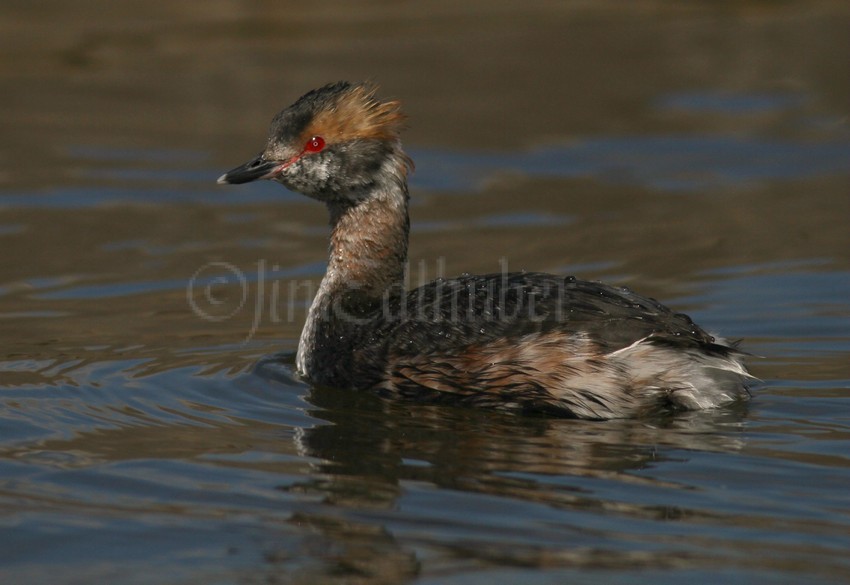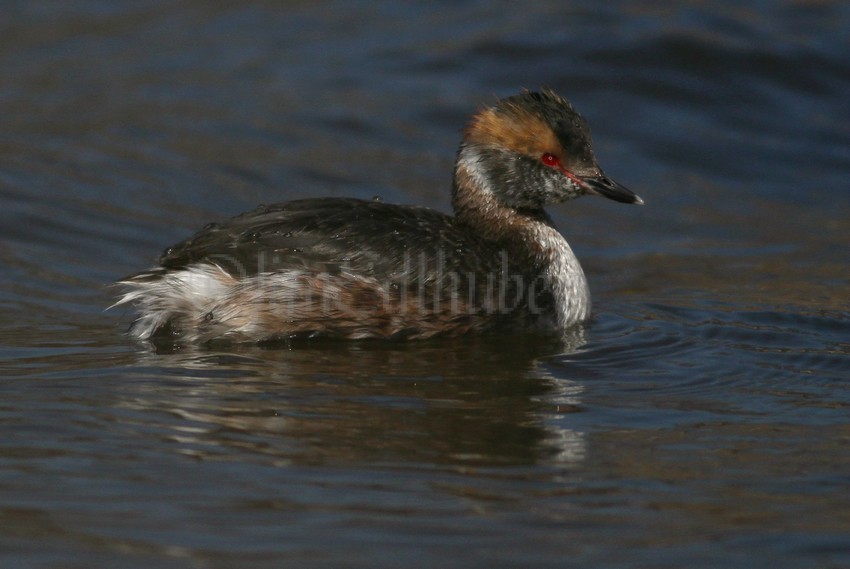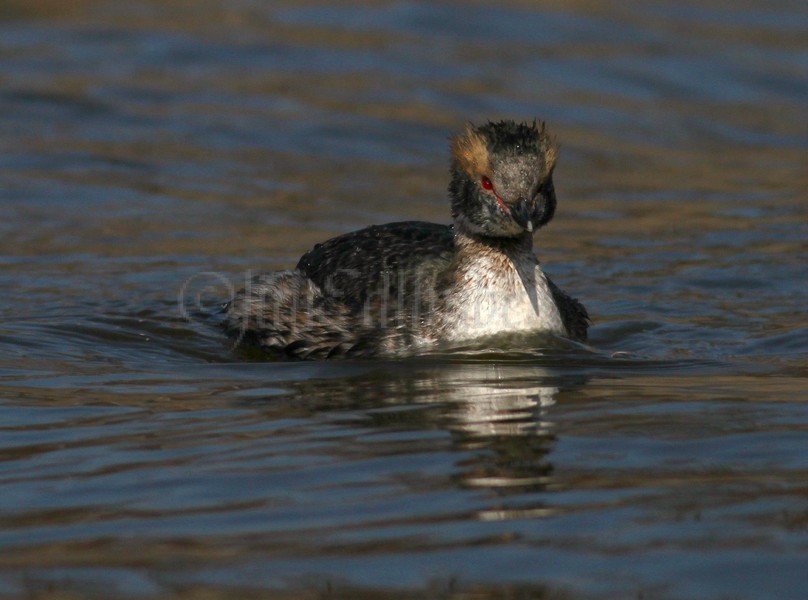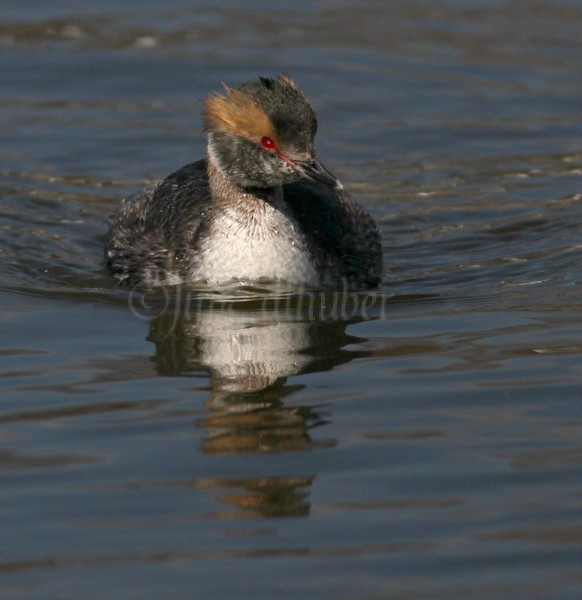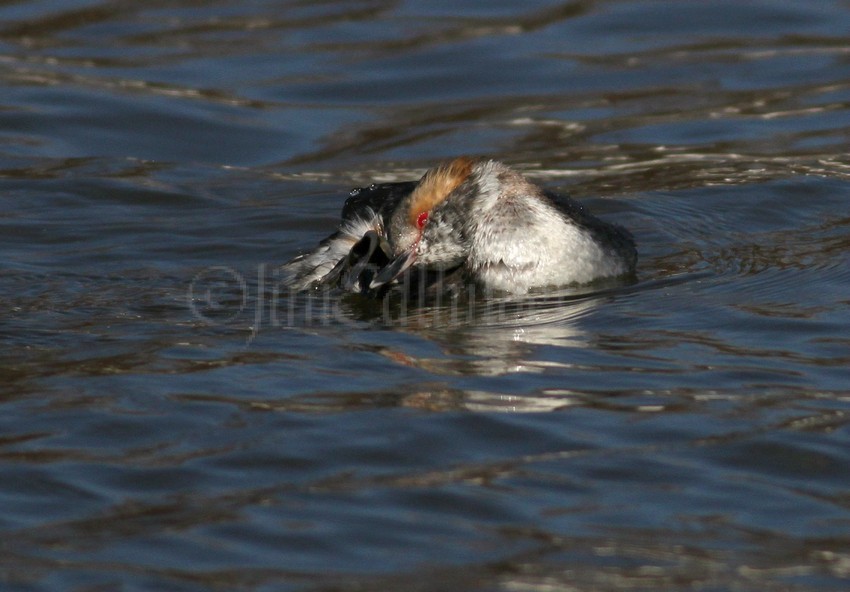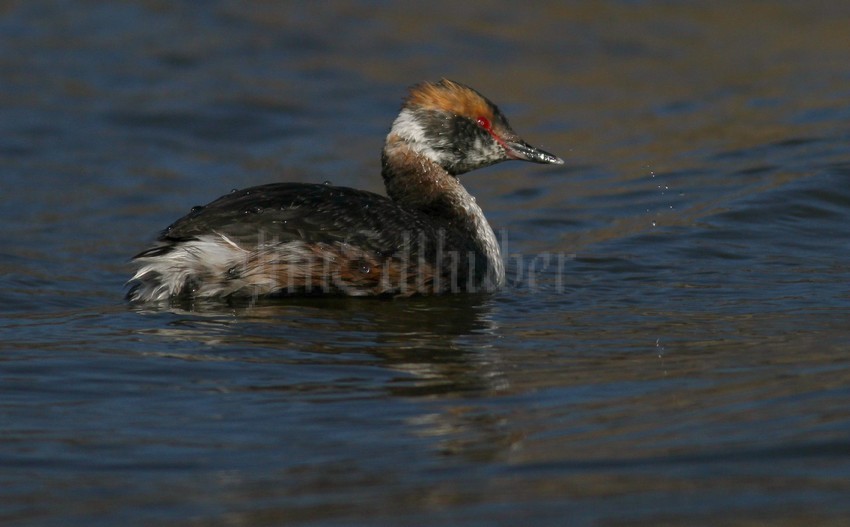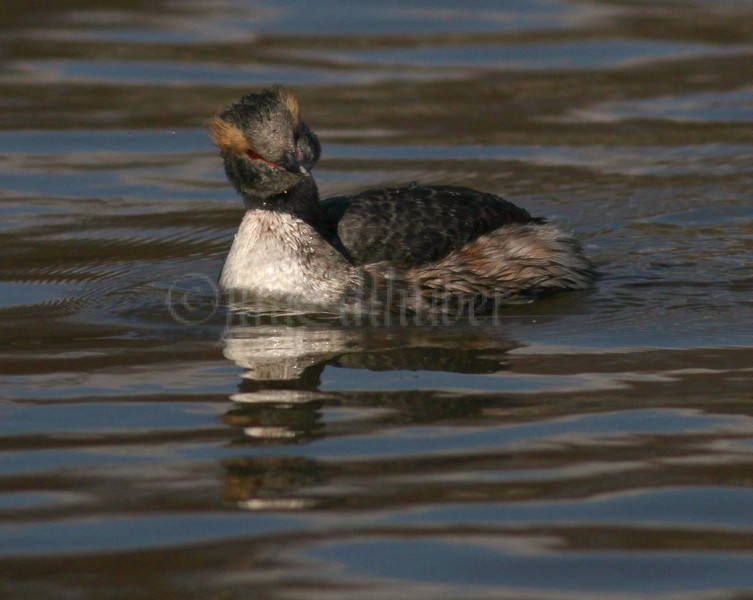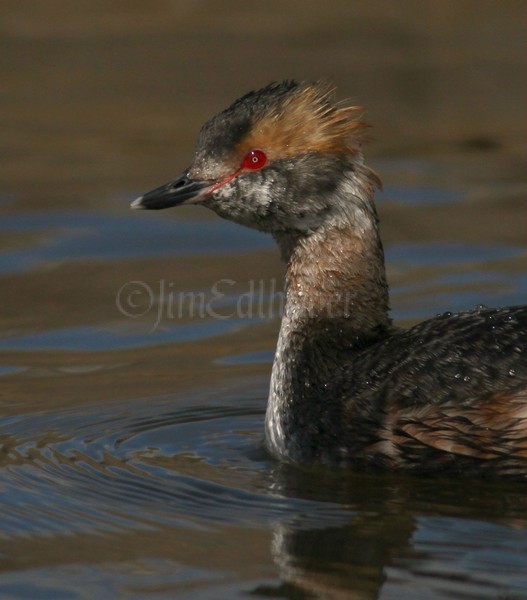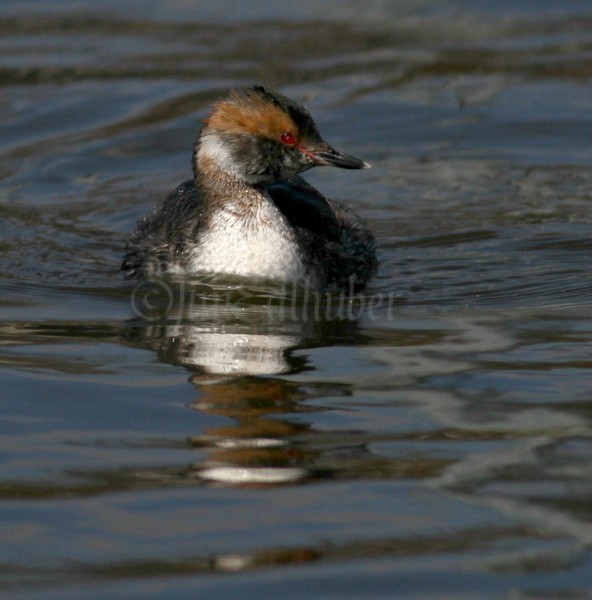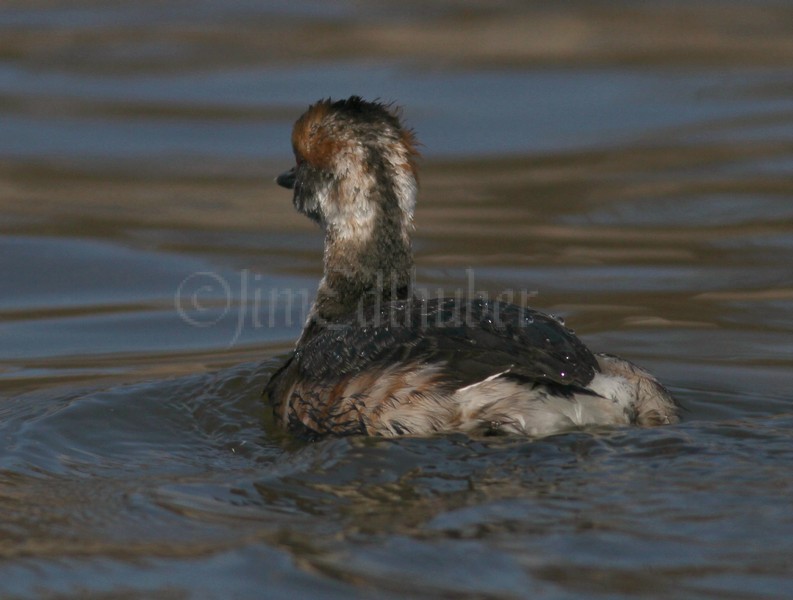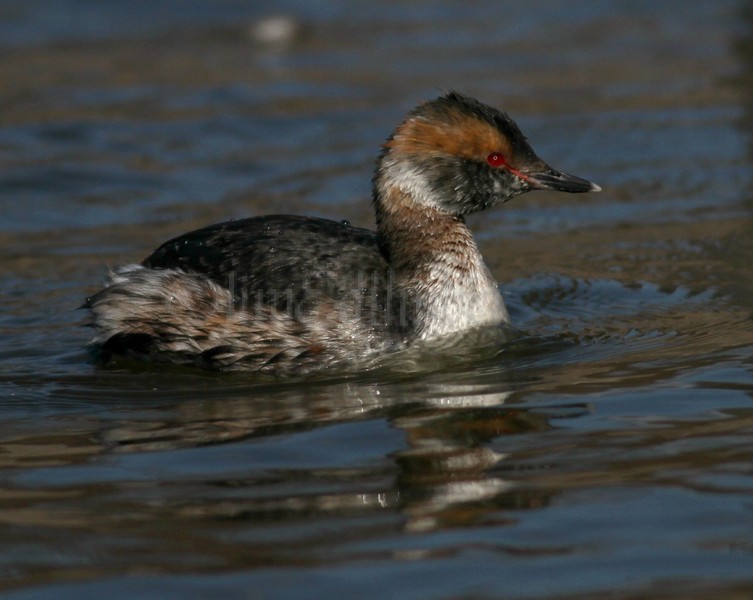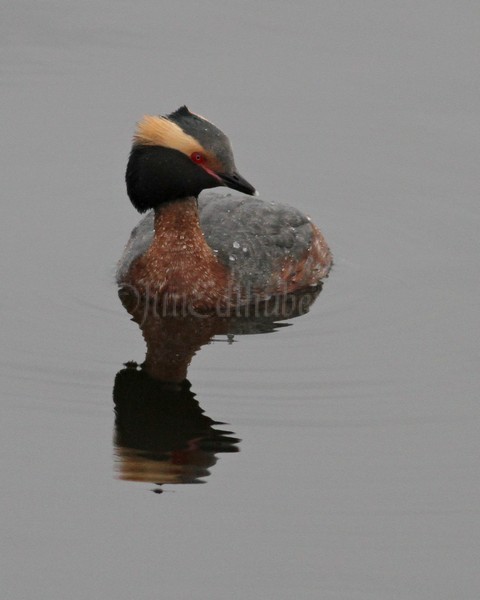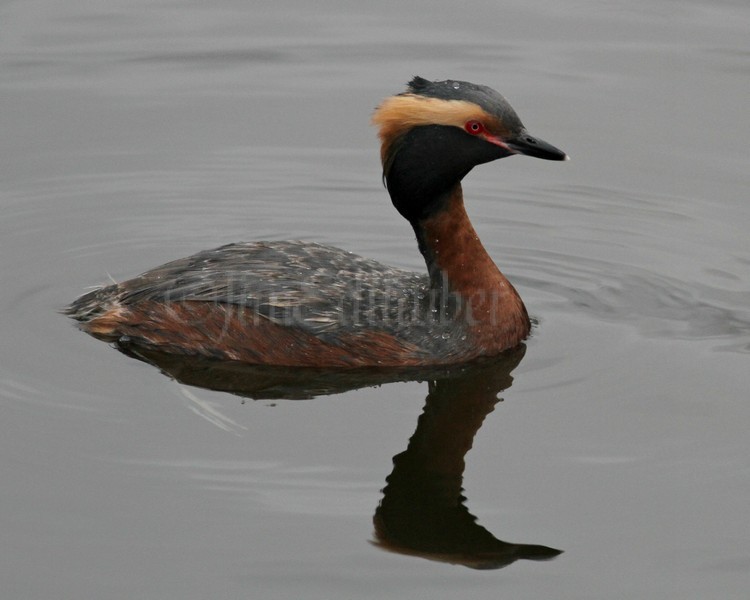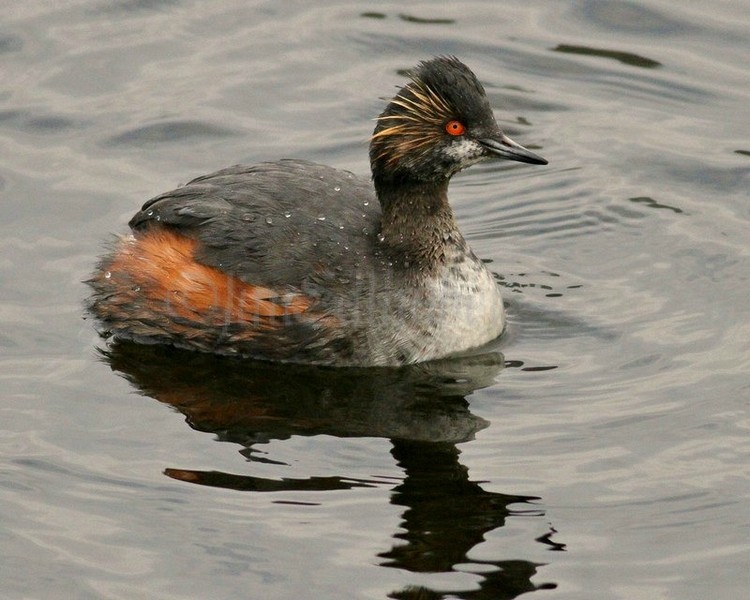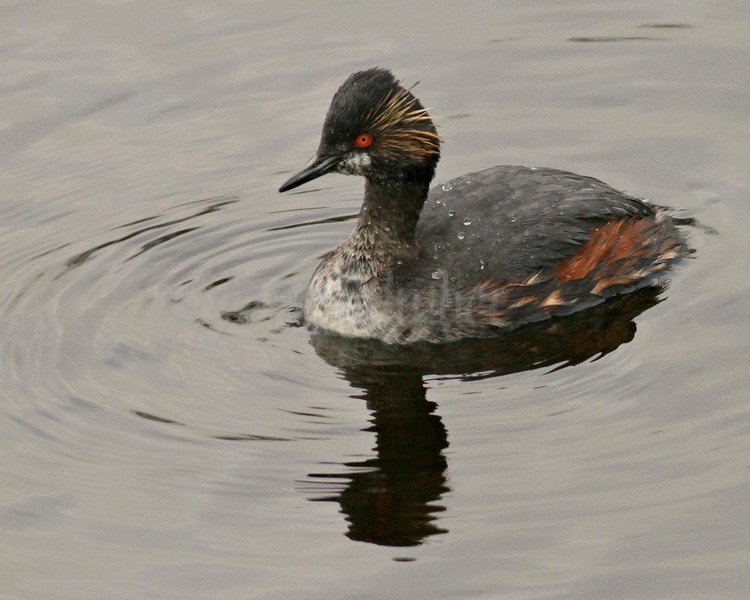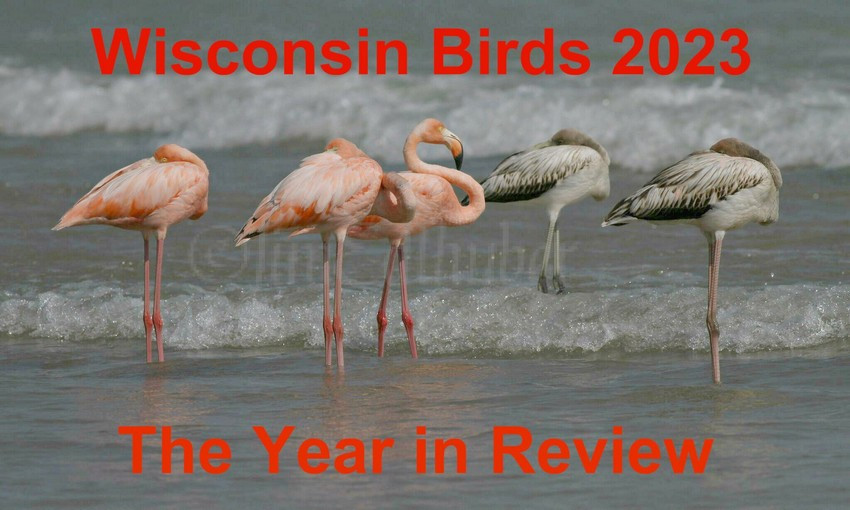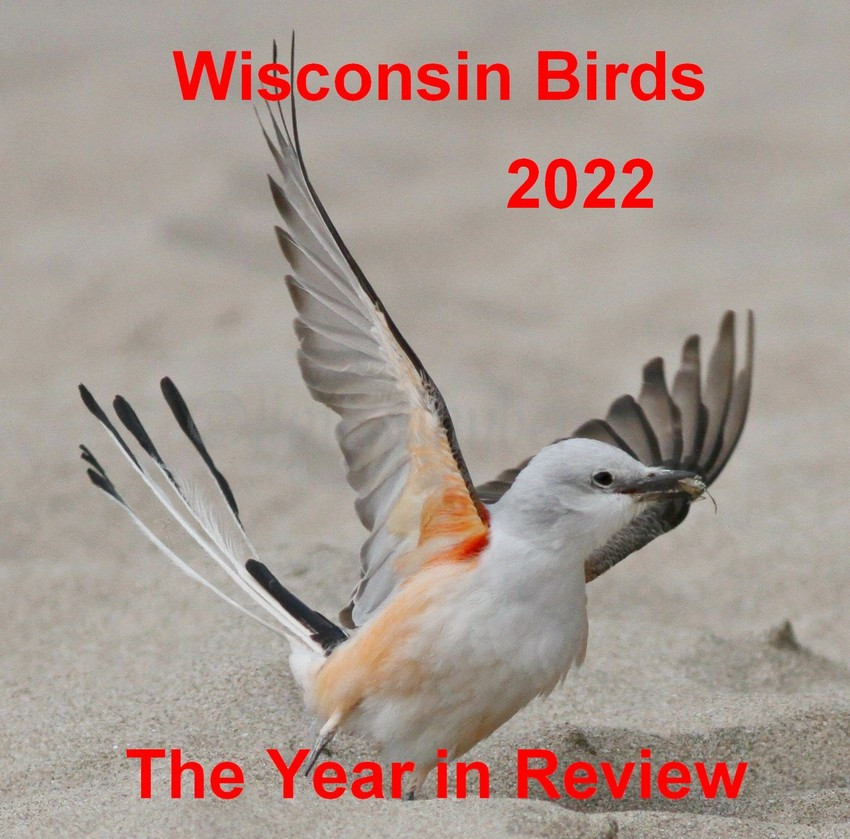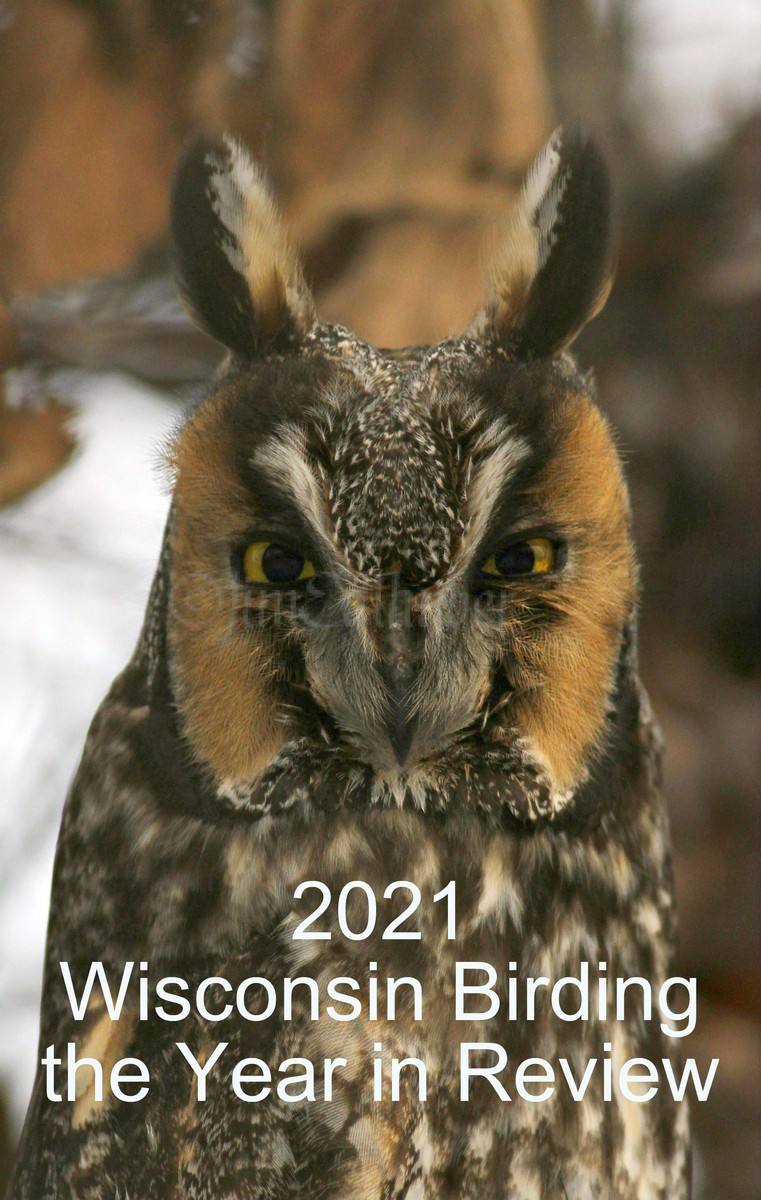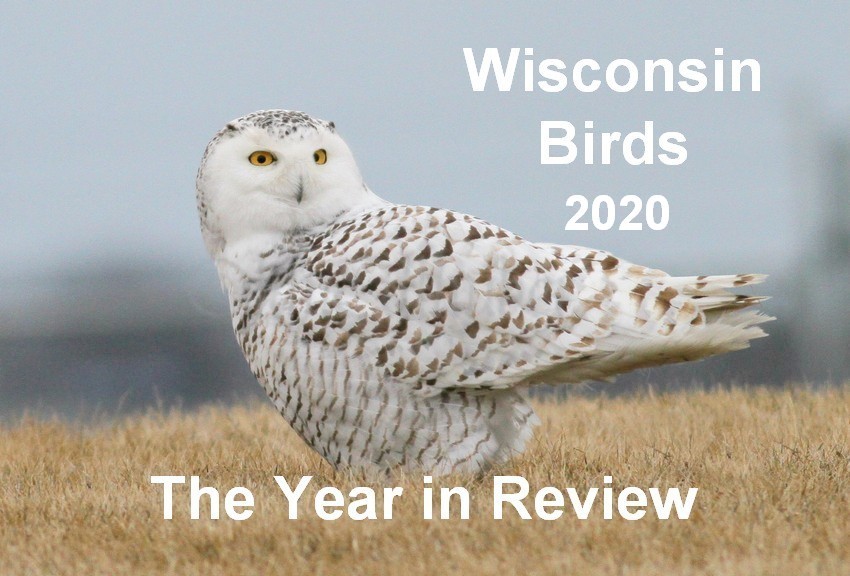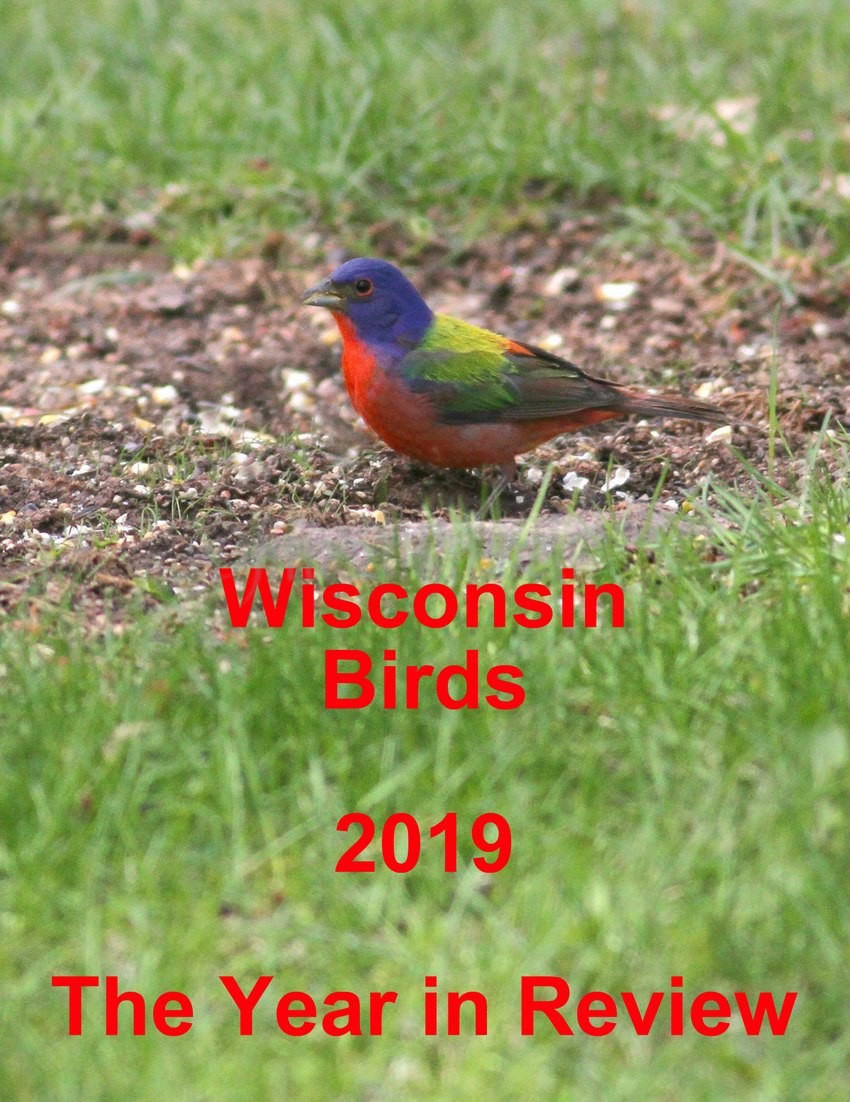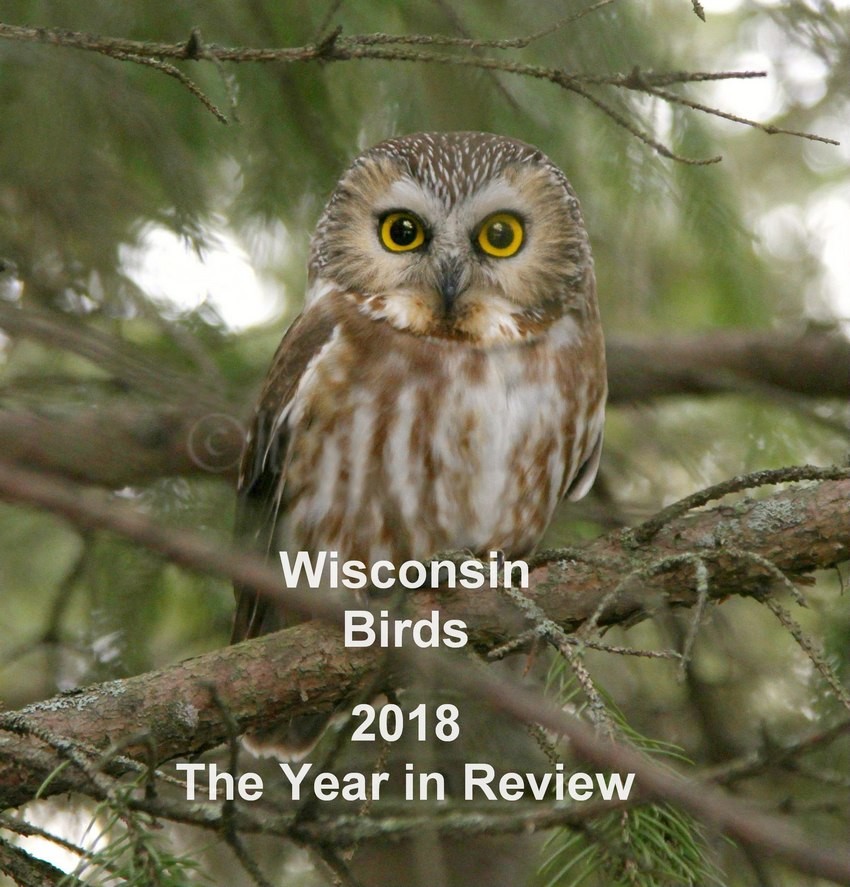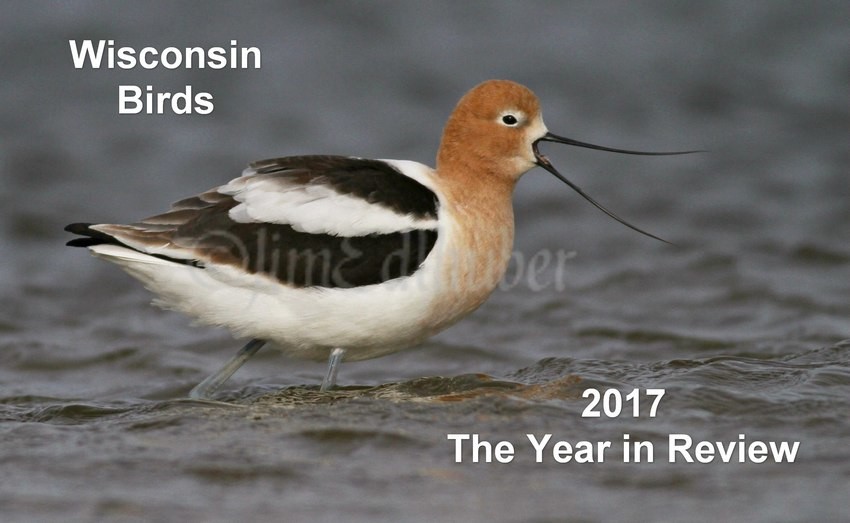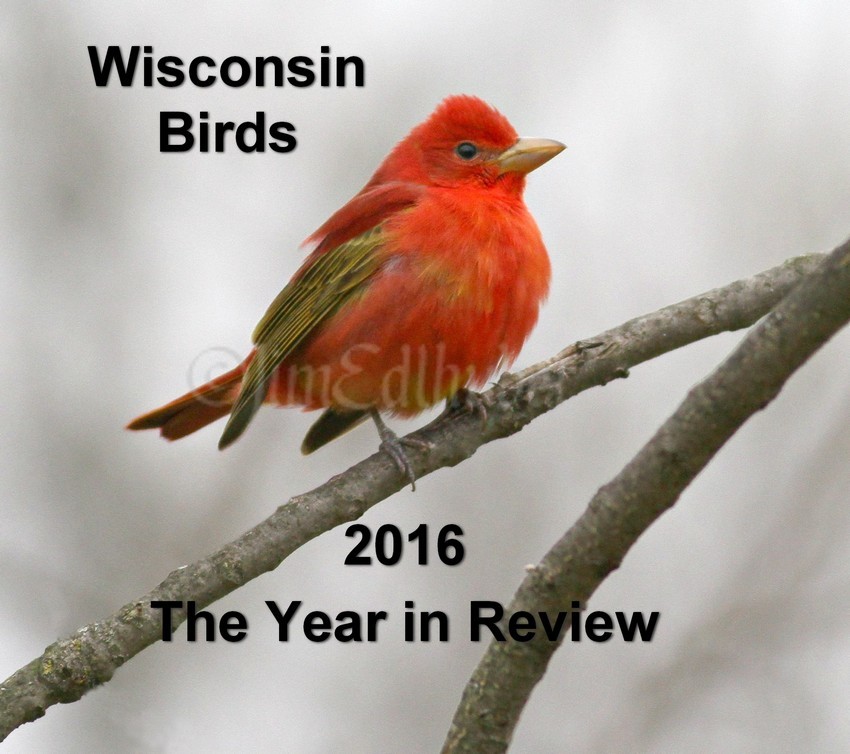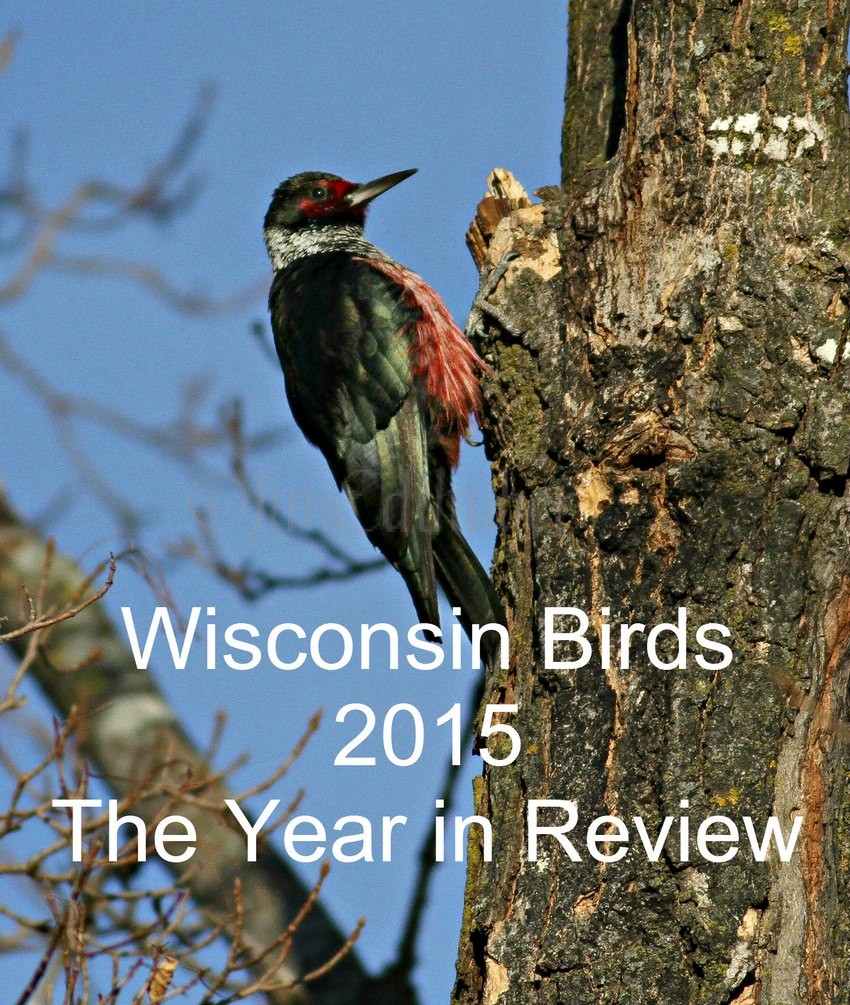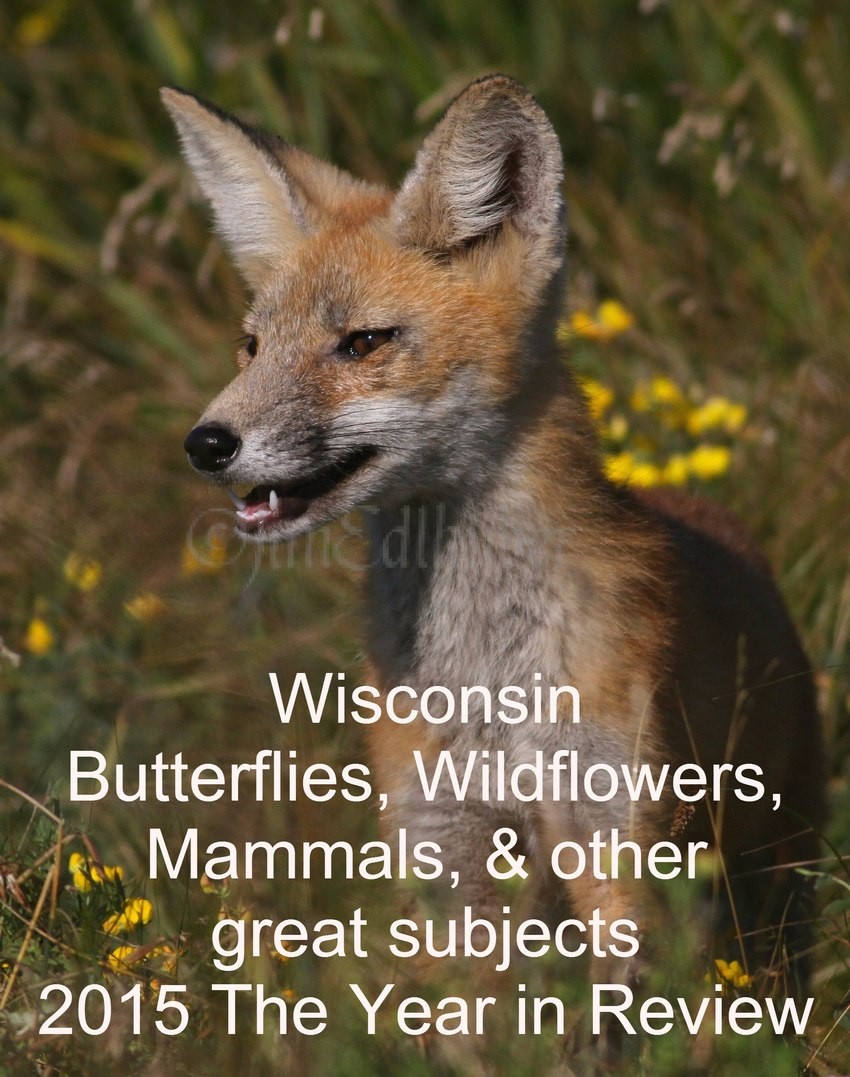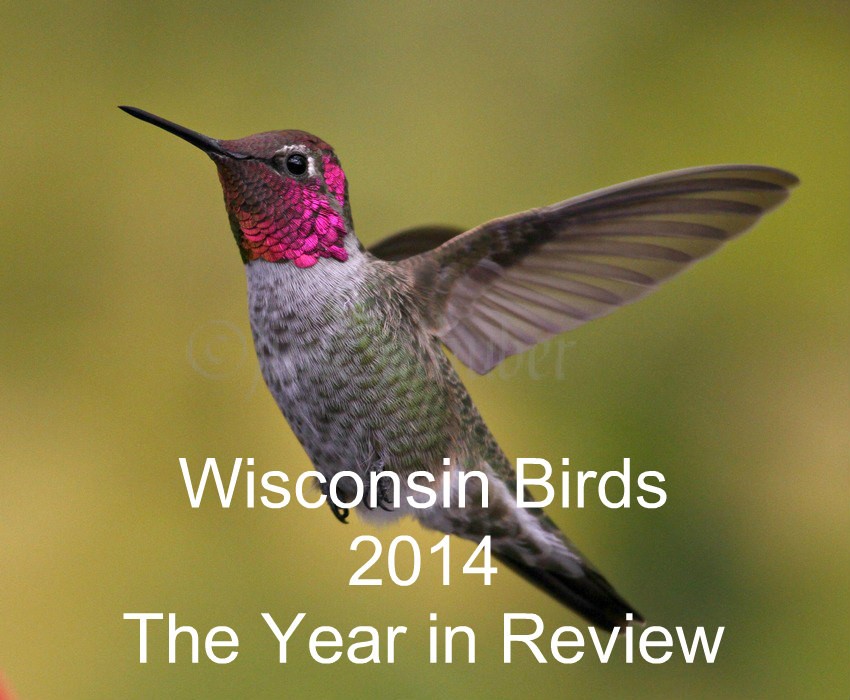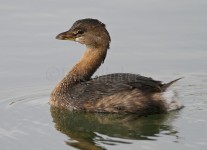
I birded the lakefront in Milwaukee last Thursday morning and it was pretty slow. The Glaucous Gull was still at Bradford Beach but that was the big event there. I think the Glaucous Gull has been present in the area since October 8, 2014. Lakeshore State Park was also slow except for a Pied-billed and Horned Grebe in their nonbreeding plumages. Later in the day I received the message on the Rufous Hummingbird in Waukesha County, the reason I am posting these images a little late. Images were taken on October 23, 2014.
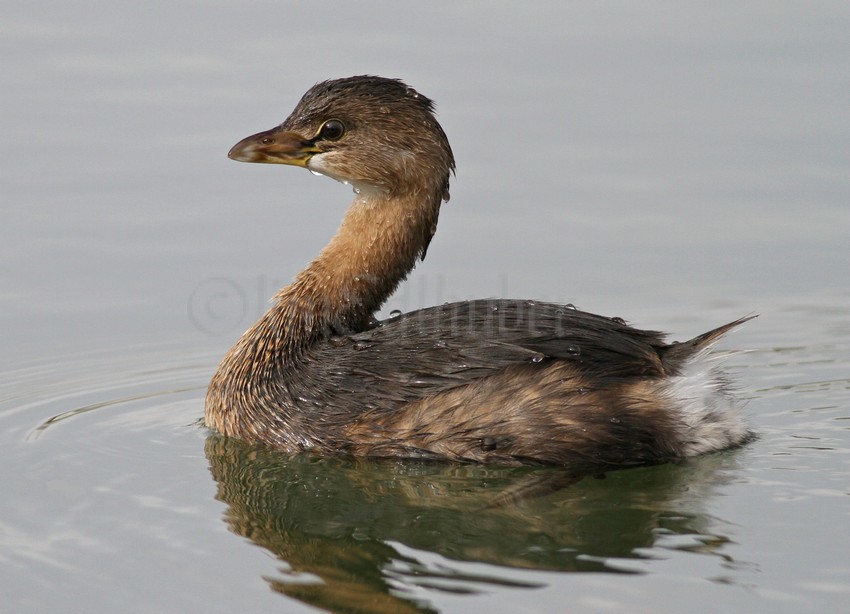
Pied-billed Grebe nonbreeding plumage
Pied-billed Grebe
Binomial name: Podilymbus podiceps
Category: Grebes
Size: 13” long, 16” wing span
Weight: 1 lb.
Habitat: Breeds across North America in ponds and lakes that are seasonal or permanent. On those waters it prefers thick stands of emergent vegetation, sloughs and bays. If waters are frozen the will go to salt water.
Diet: Diving for fish, occasional plant material, crustaceans (mainly crayfish), and aquatic insects. Their feathers are also part of their diet along with giving them to their young. Feathers help in digestion to prevent damage by bones.
Nesting: The nest is open bowl shaped made of vegetation, typically floats and is anchored by emergent vegetation. The female lays 3-10 light blue eggs, sometimes twice a year that both parents help incubate. The young are feed by both parents and are typically carried around on the adult backs.
Cool Facts: Small bird, stocky, short necked that dives up to 30 seconds at a time. They are known to dive for food with young on their back. Adults have a black ring around their chicken like bill during breeding season. A shy, not sociable bird that is sensitive to disturbances, are rarely found in flocks.
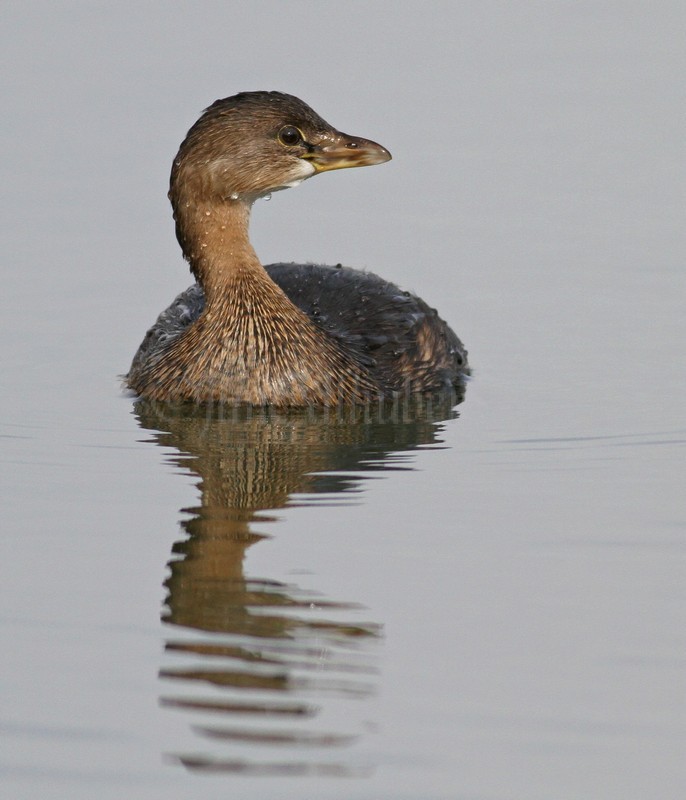
Pied-billed Grebe nonbreeding plumage
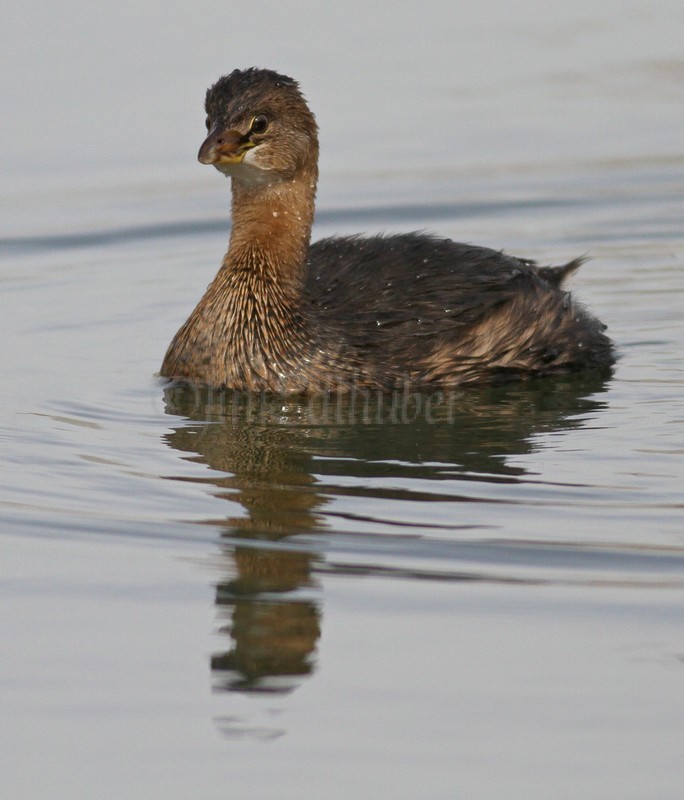
Pied-billed Grebe nonbreeding plumage
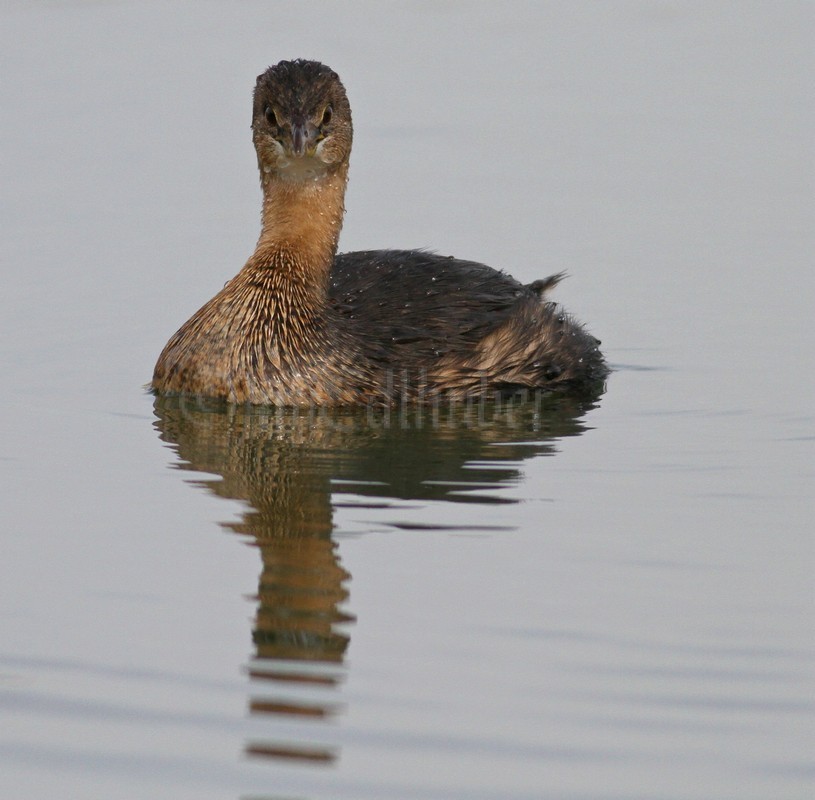
Pied-billed Grebe nonbreeding plumage
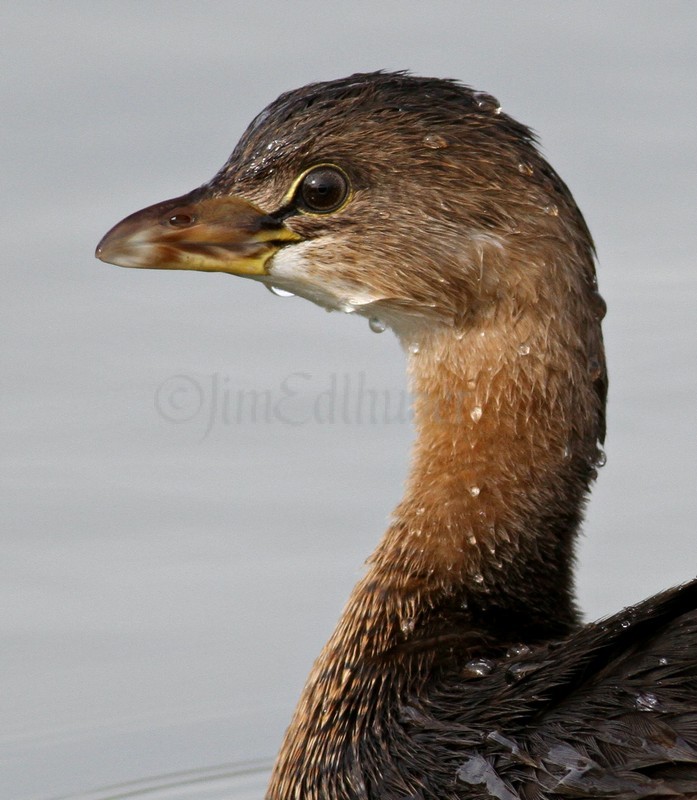
Pied-billed Grebe nonbreeding plumage
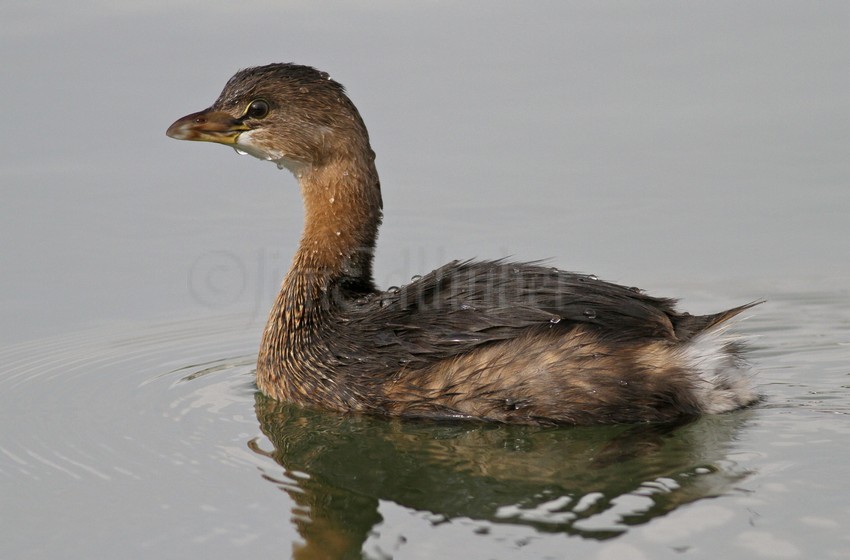
Pied-billed Grebe nonbreeding plumage
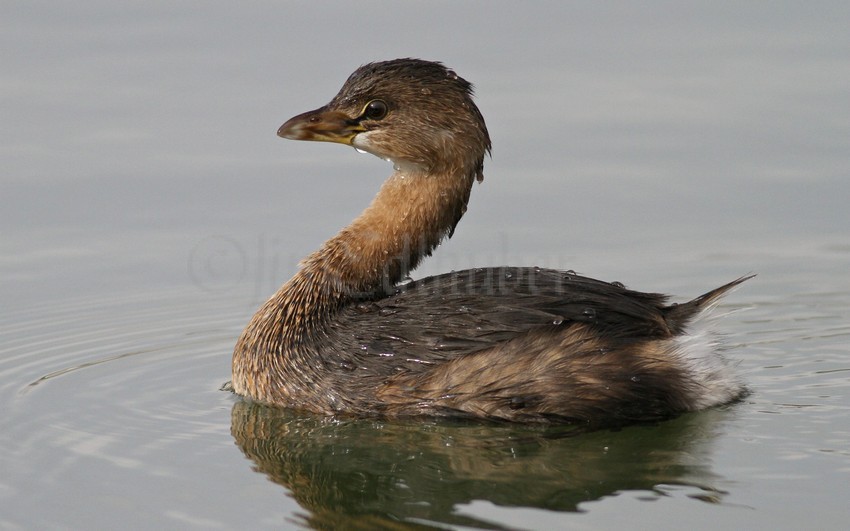
Pied-billed Grebe nonbreeding plumage
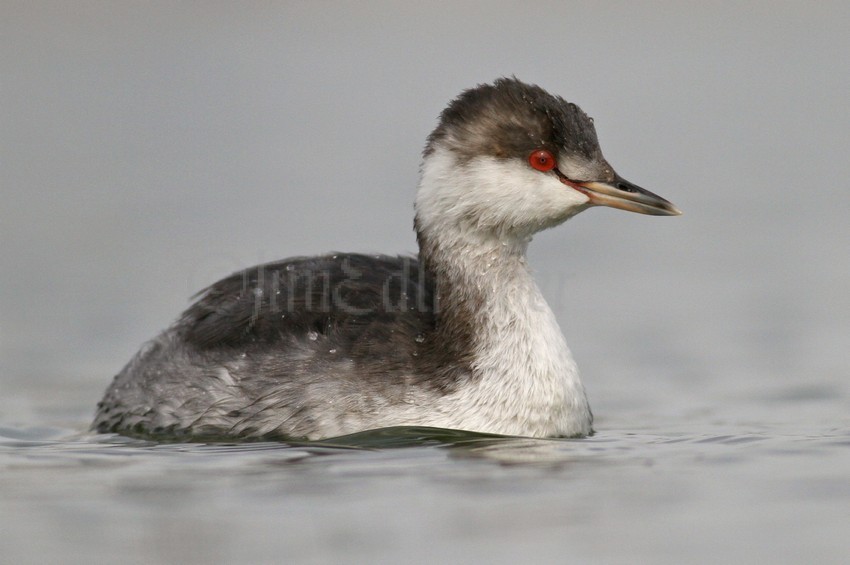
Horned Grebe nonbreeding plumage
Horned Grebe
Binomial name: Podiceps auritus
Category: Grebes
Size: 14” long, 18” wing span
Weight: 1 lb.
Habitat: Breeds on small to medium sized, vegetated areas of shallow freshwater ponds and marshes. The breeding range is from northern central US north to northern regions of Canada and Alaska.
Diet: In summer mostly feed on aquatic insects which they get off the top of the water. They also eat crustaceans which they get diving under water. In winter their diet includes fish, crustacean and small aquatic animals.
Nesting: The nest is a pile of wet plant material that is floating or sometimes on a rock. It is an open bowl and located near the water’s edge as this since the grebe legs are back far and they cannot walk well. The female lays 3-7 eggs white to light brown or light blue-green. The young are feed by both parents and can swim and dive usually the next day after hatching. The young often ride on the back of the parents back like loons do.
Cool Facts: This grebe eats some of its own feathers and they sit in their stomach and act as a filter and hold fish bones and other things till they are digested. One of the smaller grebes that is an excellent diver and swimmer that can stay under water for very long periods of time.
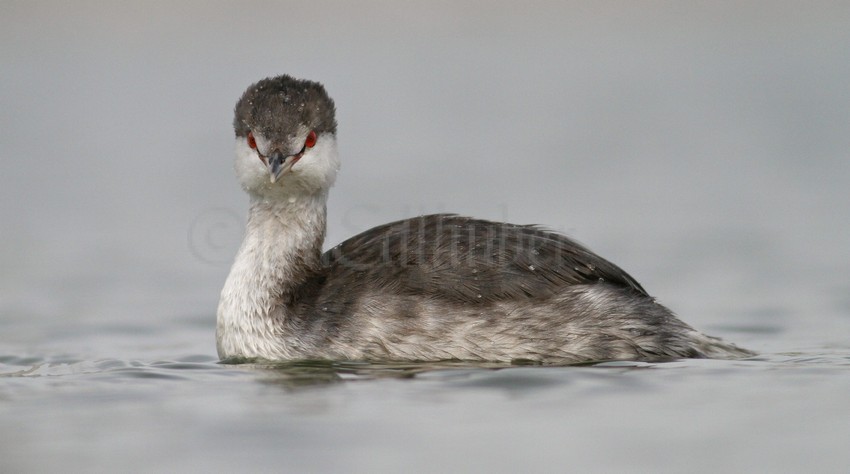
Horned Grebe nonbreeding plumage

Horned Grebe nonbreeding plumage
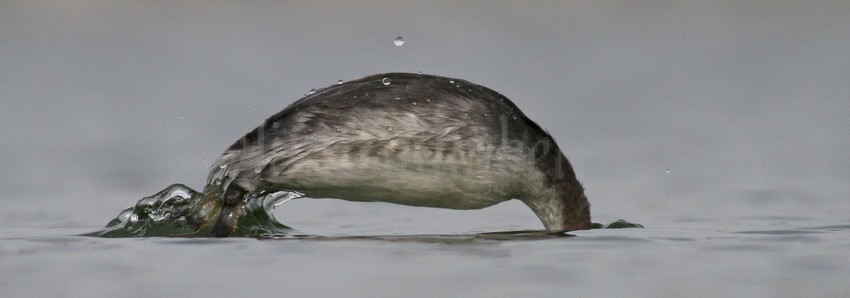
Horned Grebe nonbreeding plumage
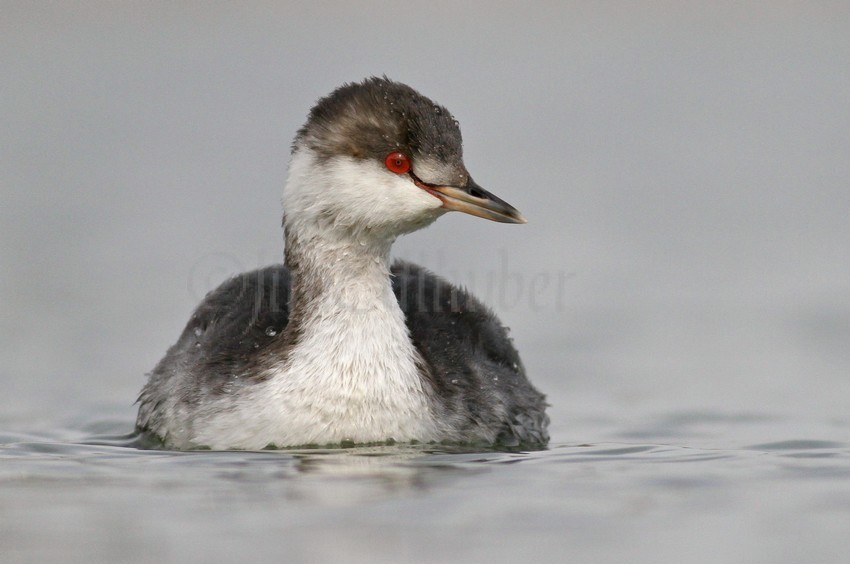
Horned Grebe nonbreeding plumage
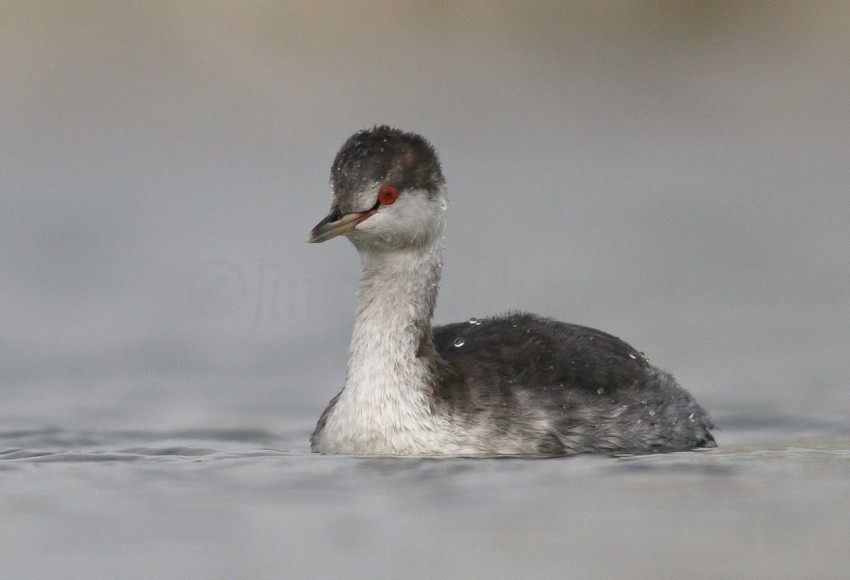
Horned Grebe nonbreeding plumage
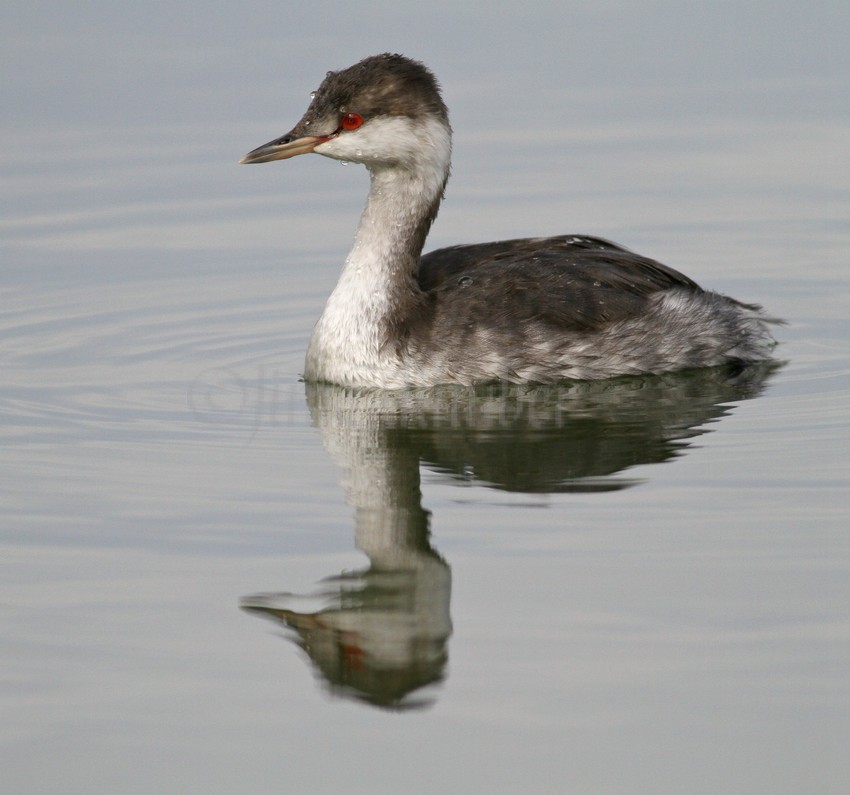
Horned Grebe nonbreeding plumage
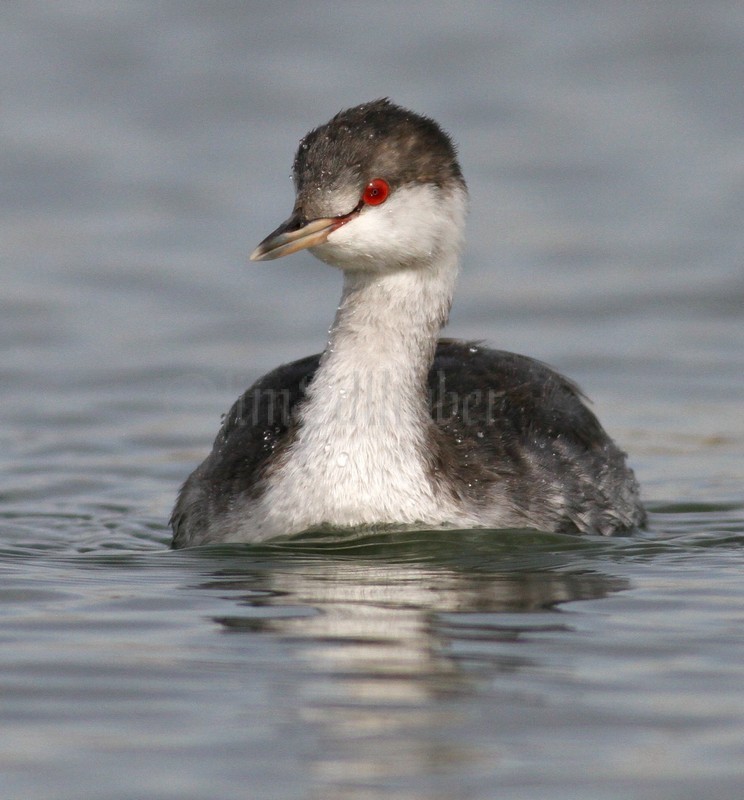
Horned Grebe nonbreeding plumage
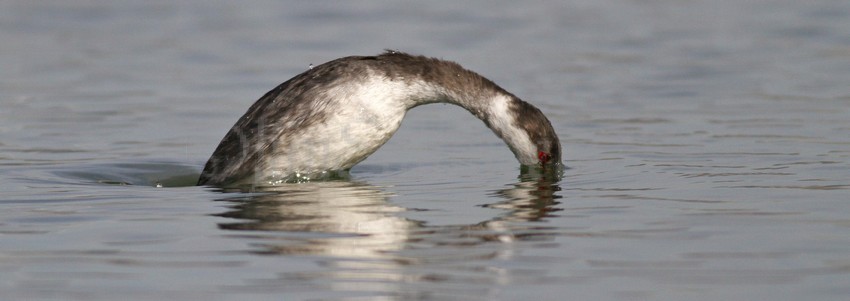
Horned Grebe nonbreeding plumage going for the dive!

